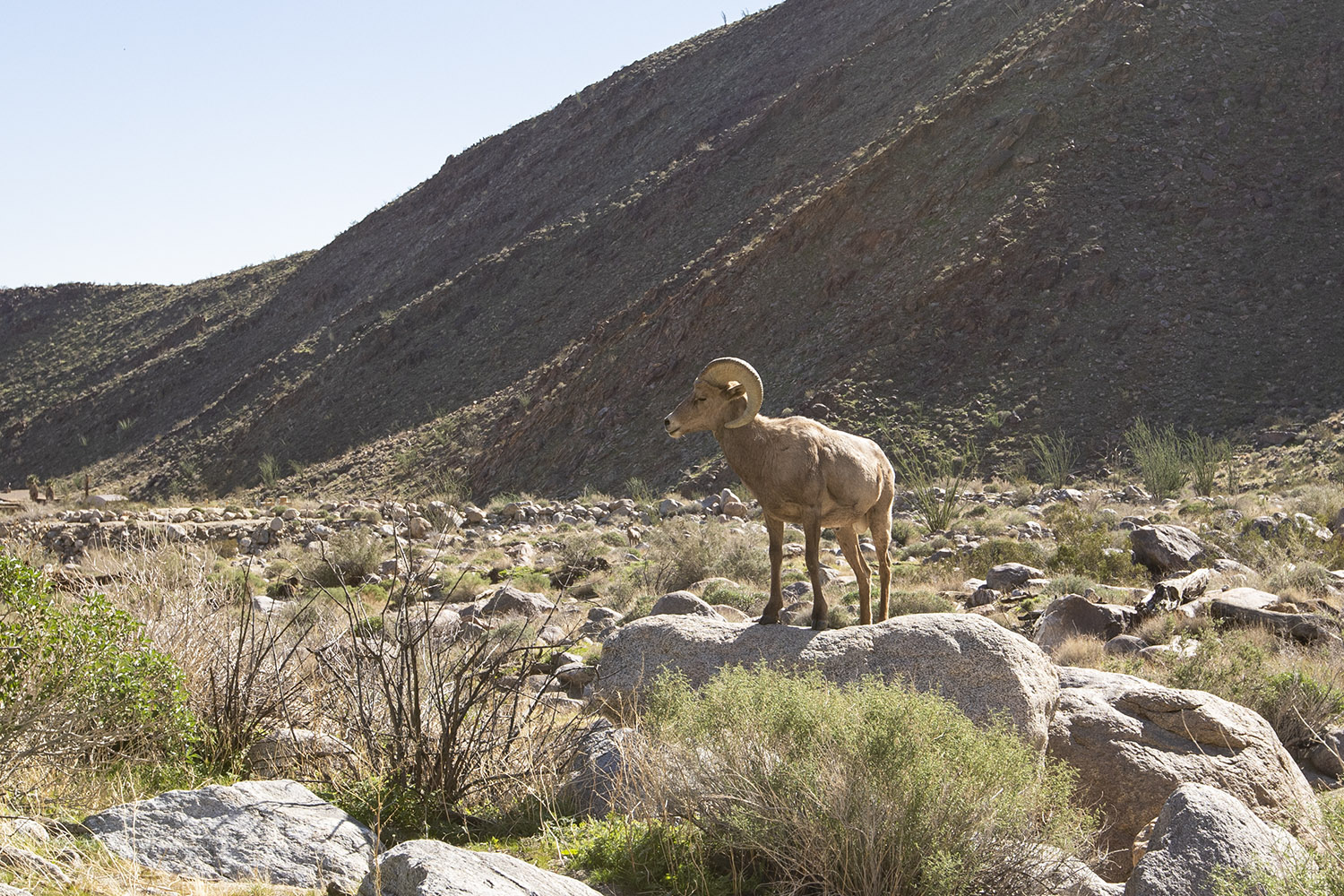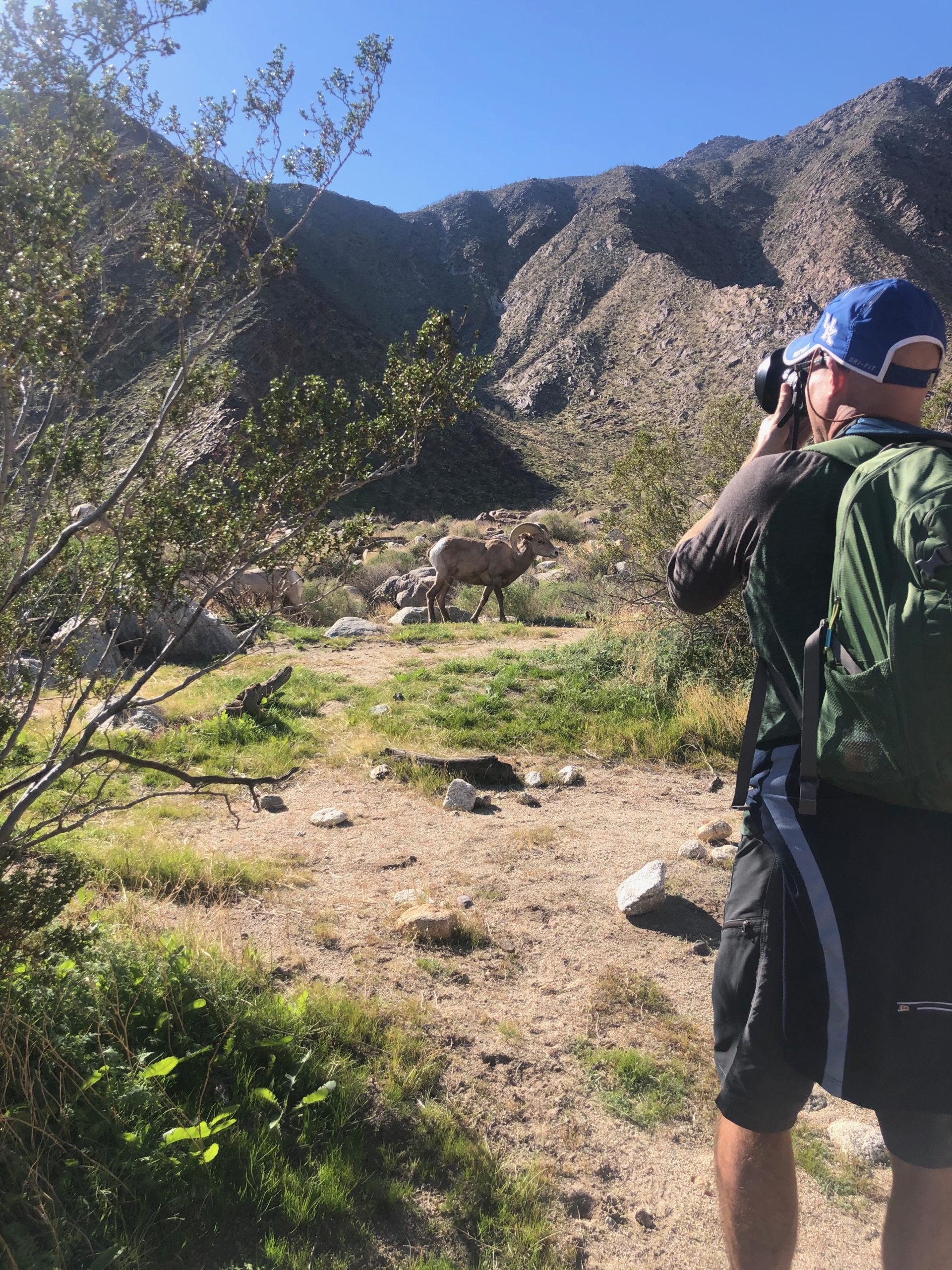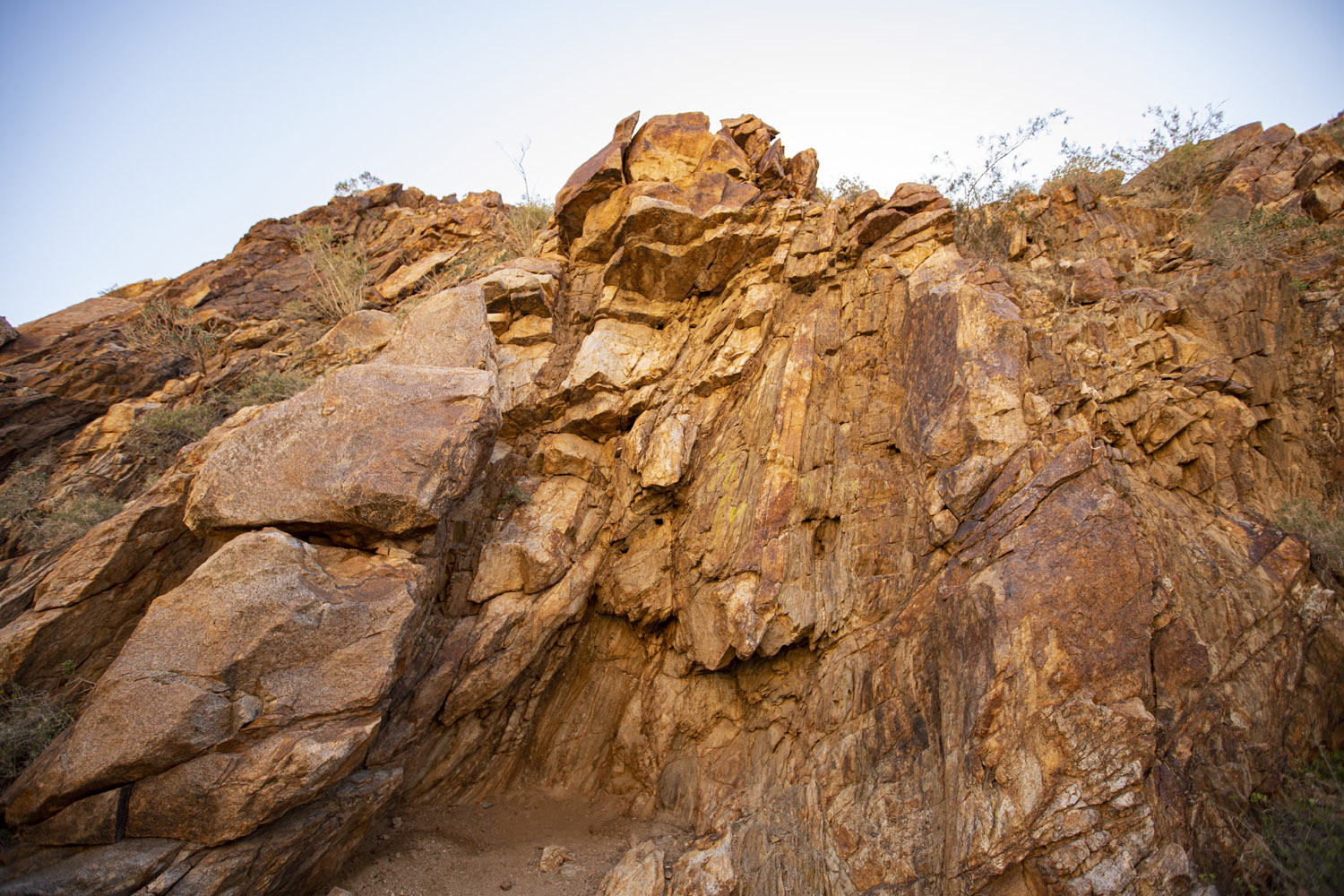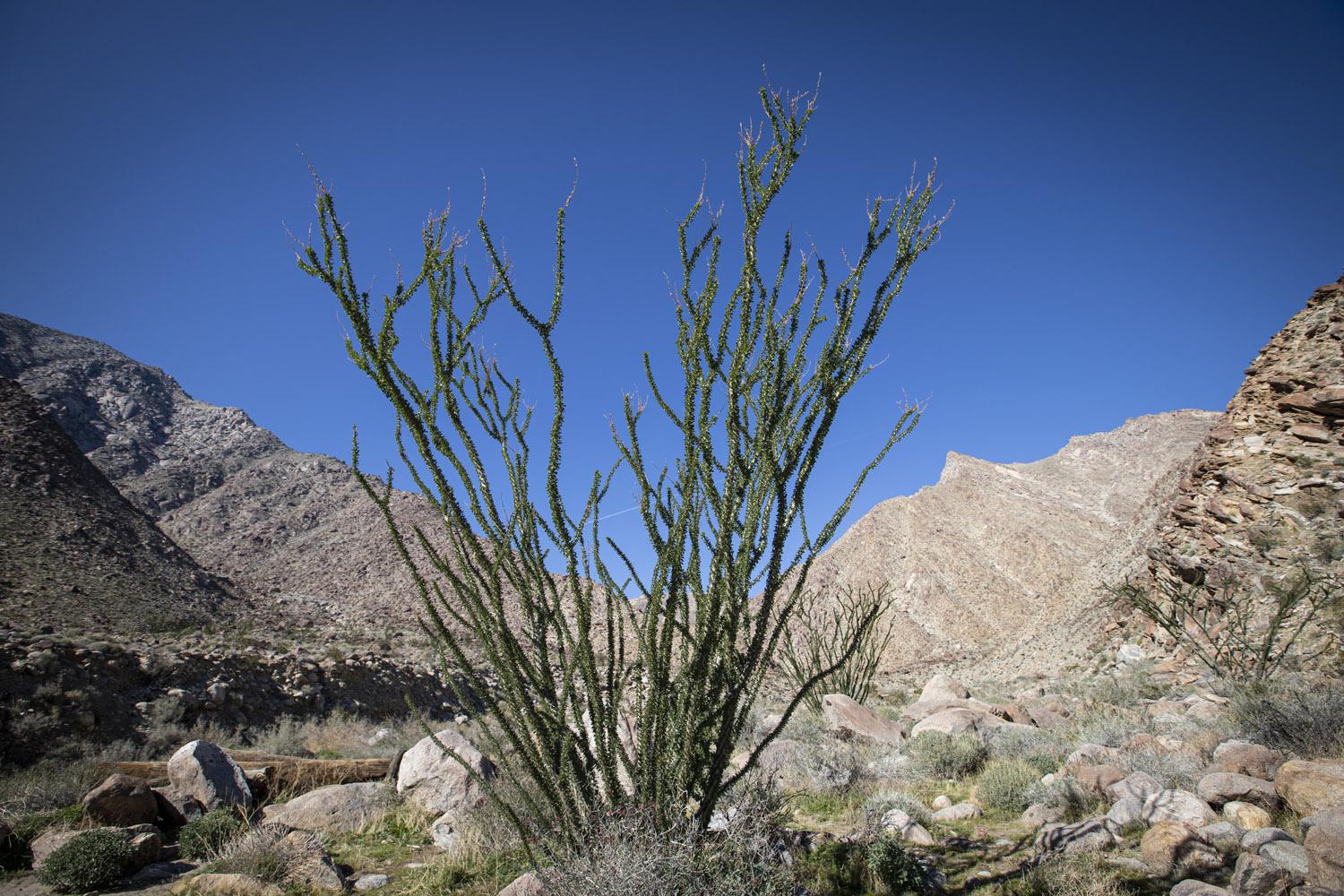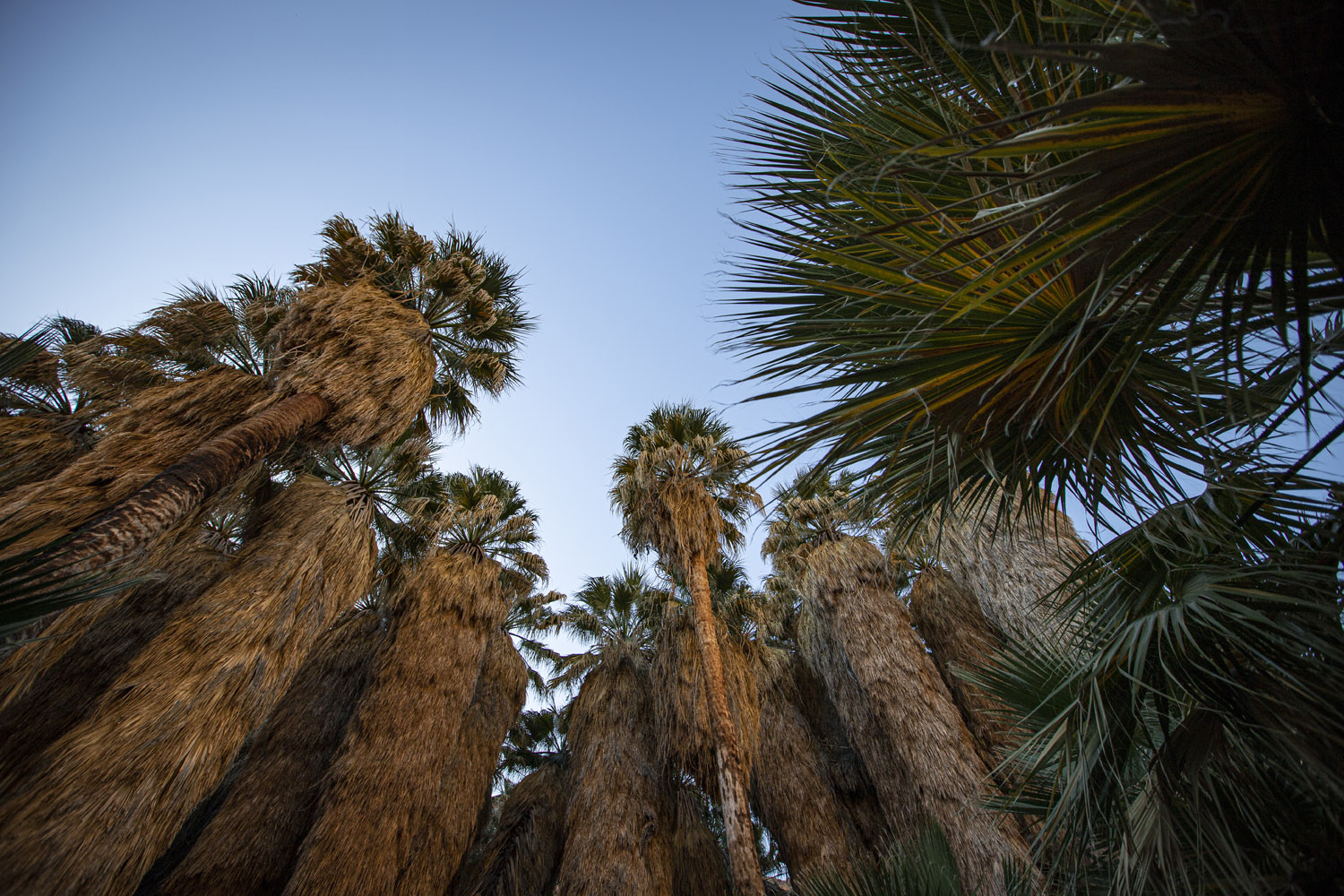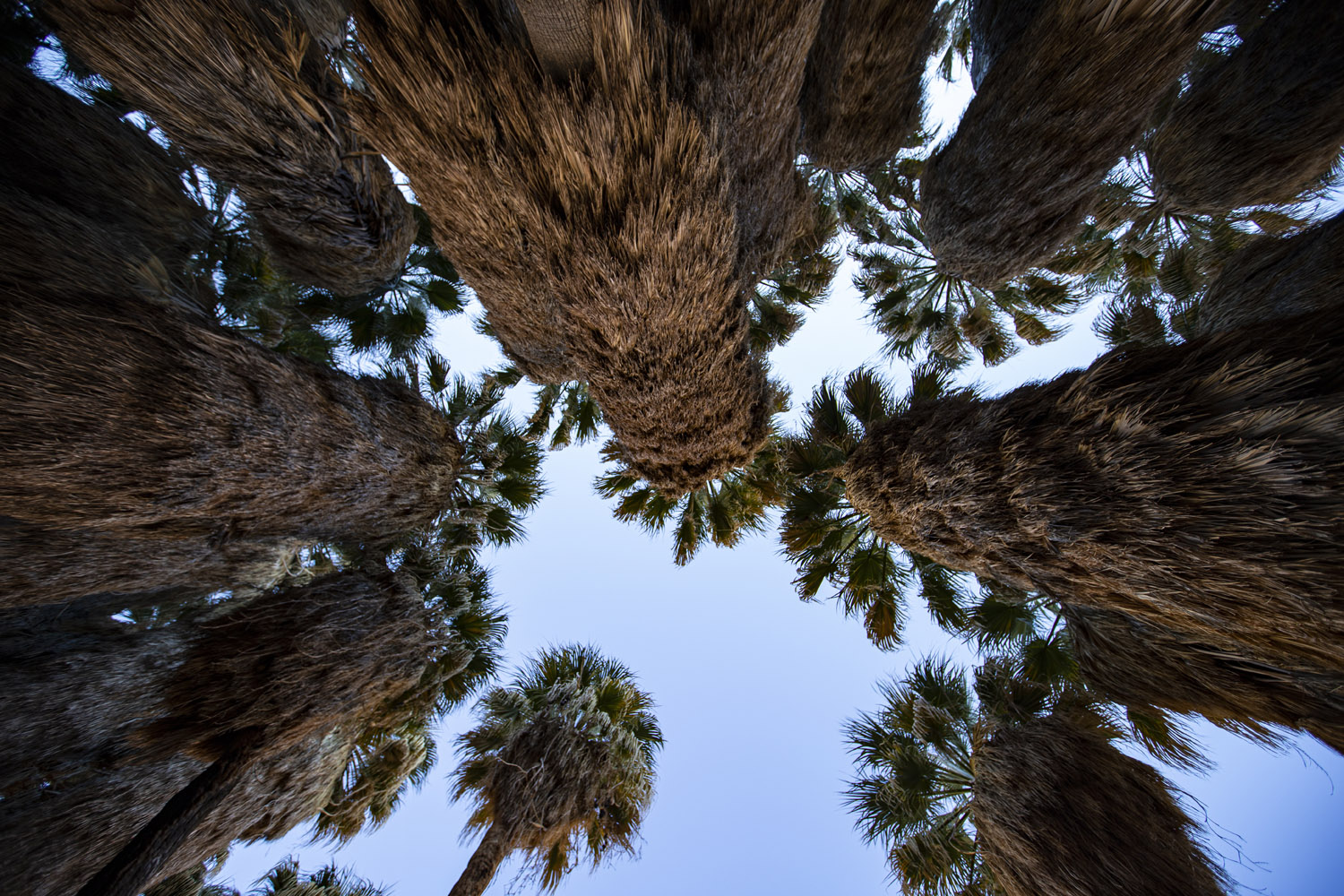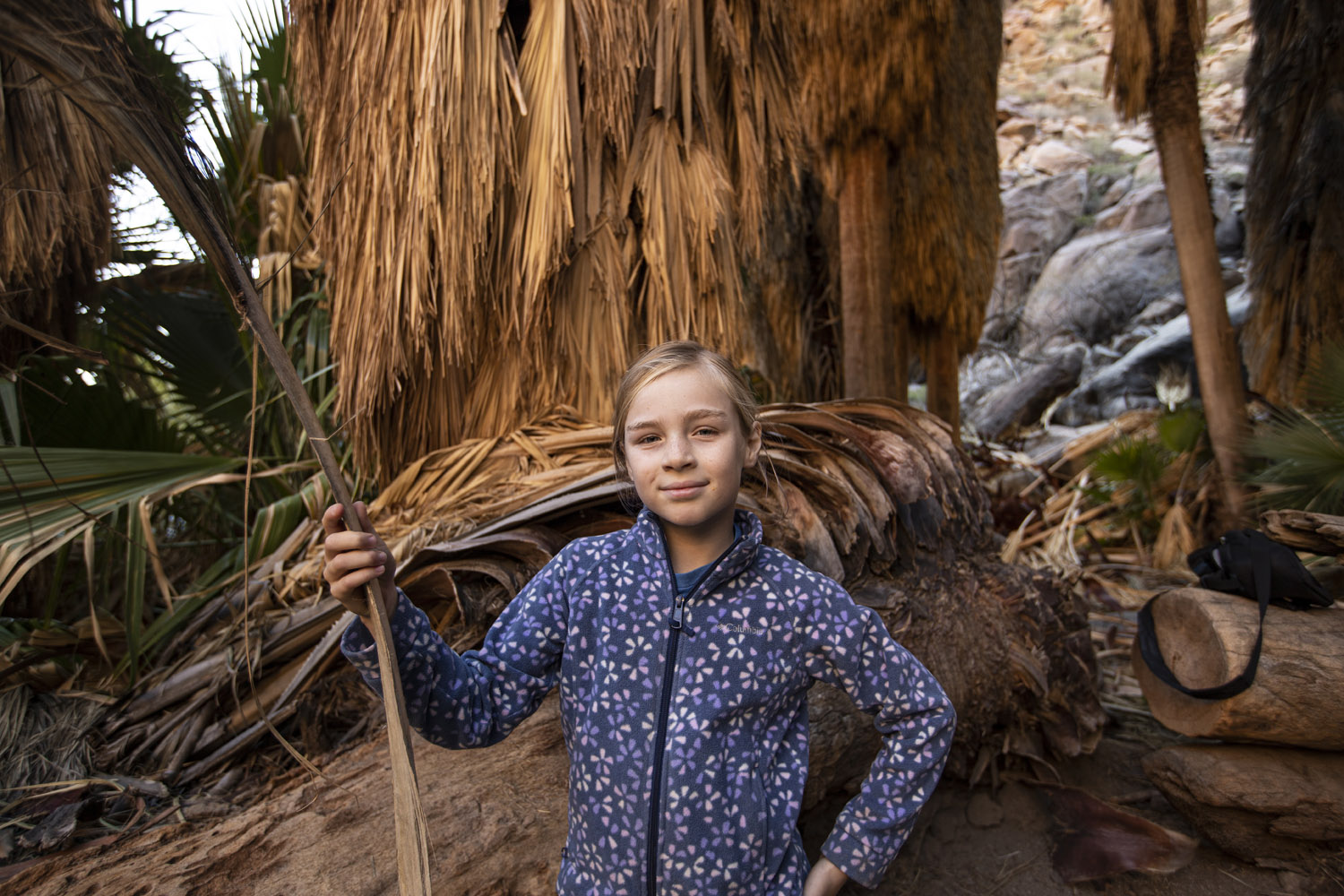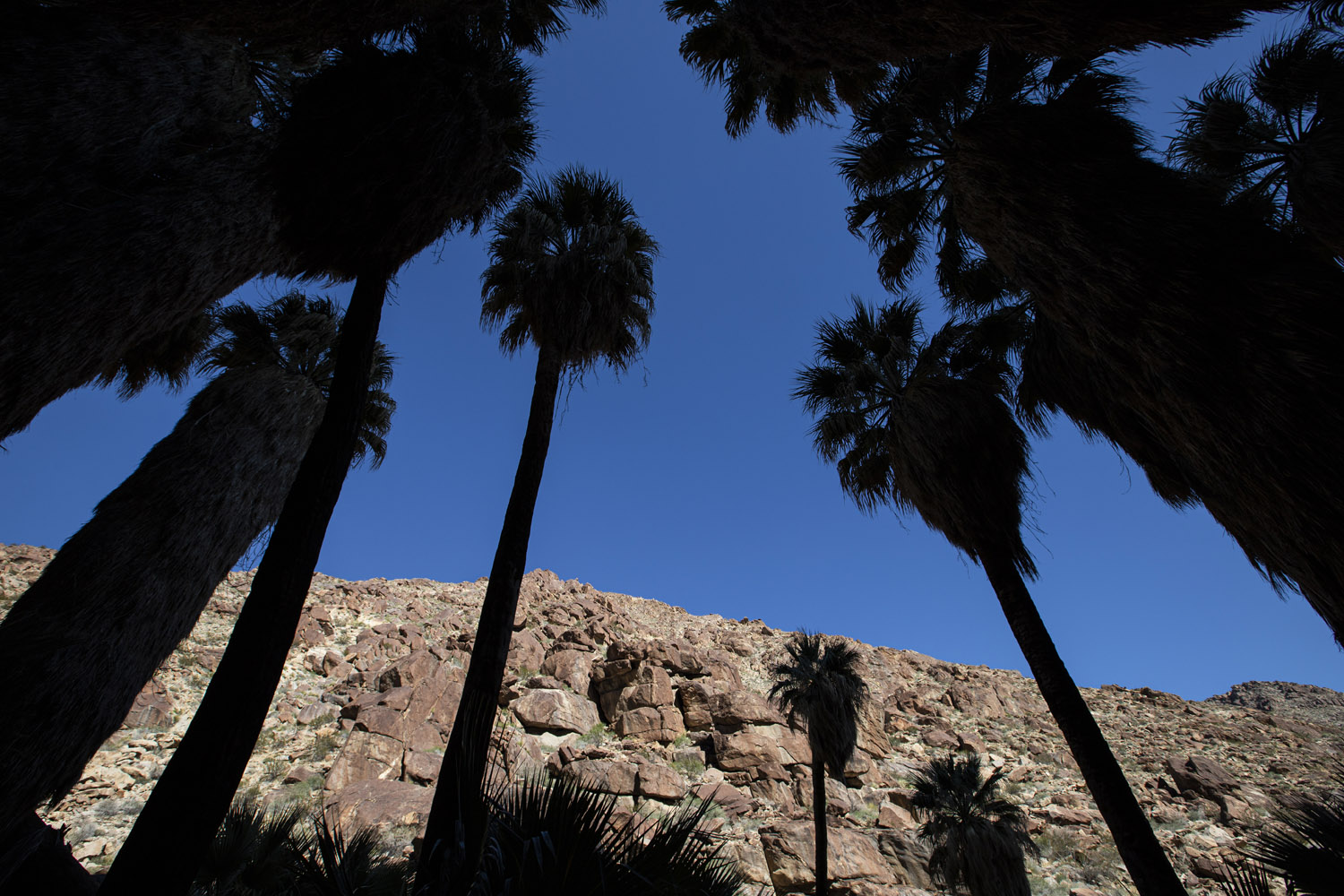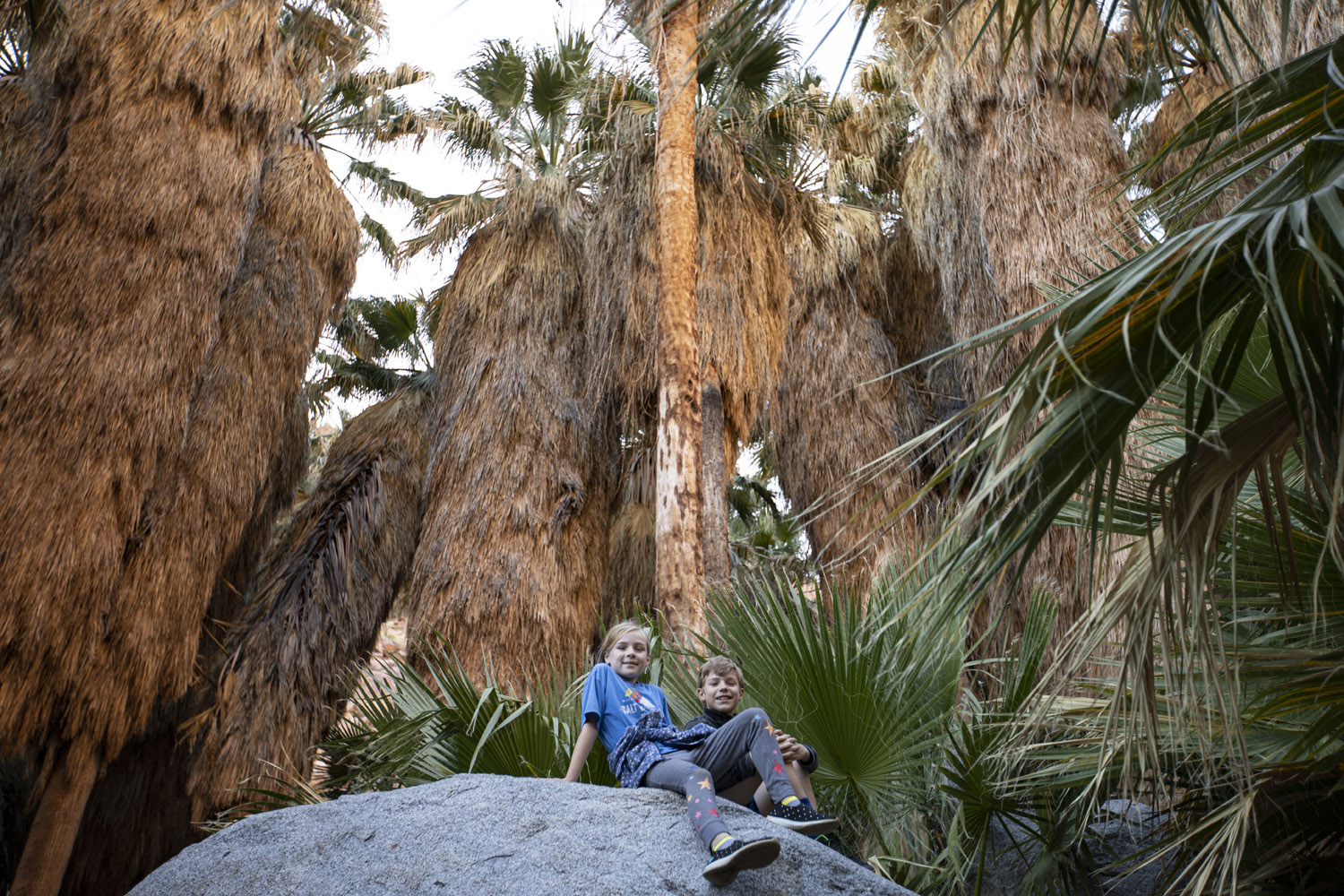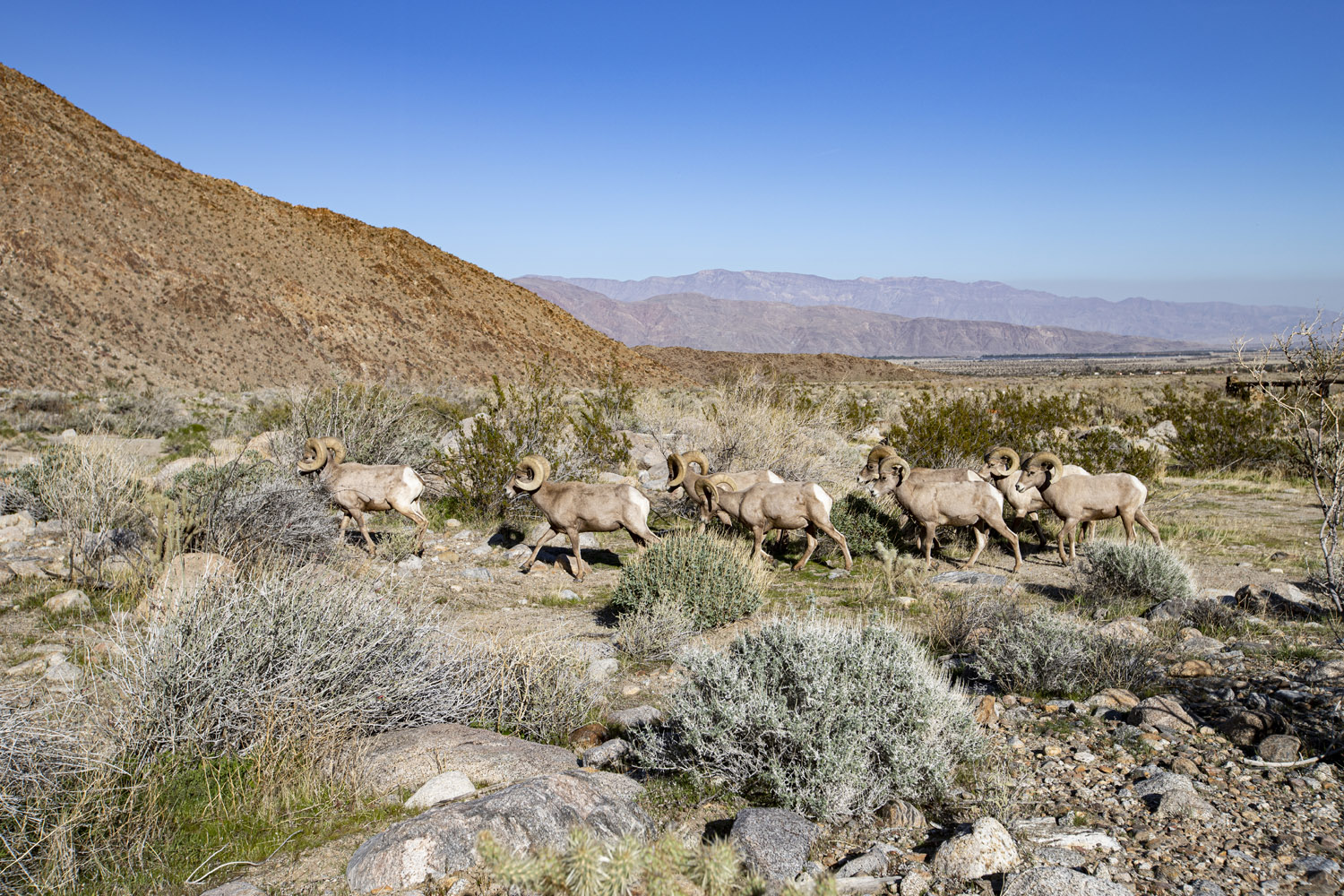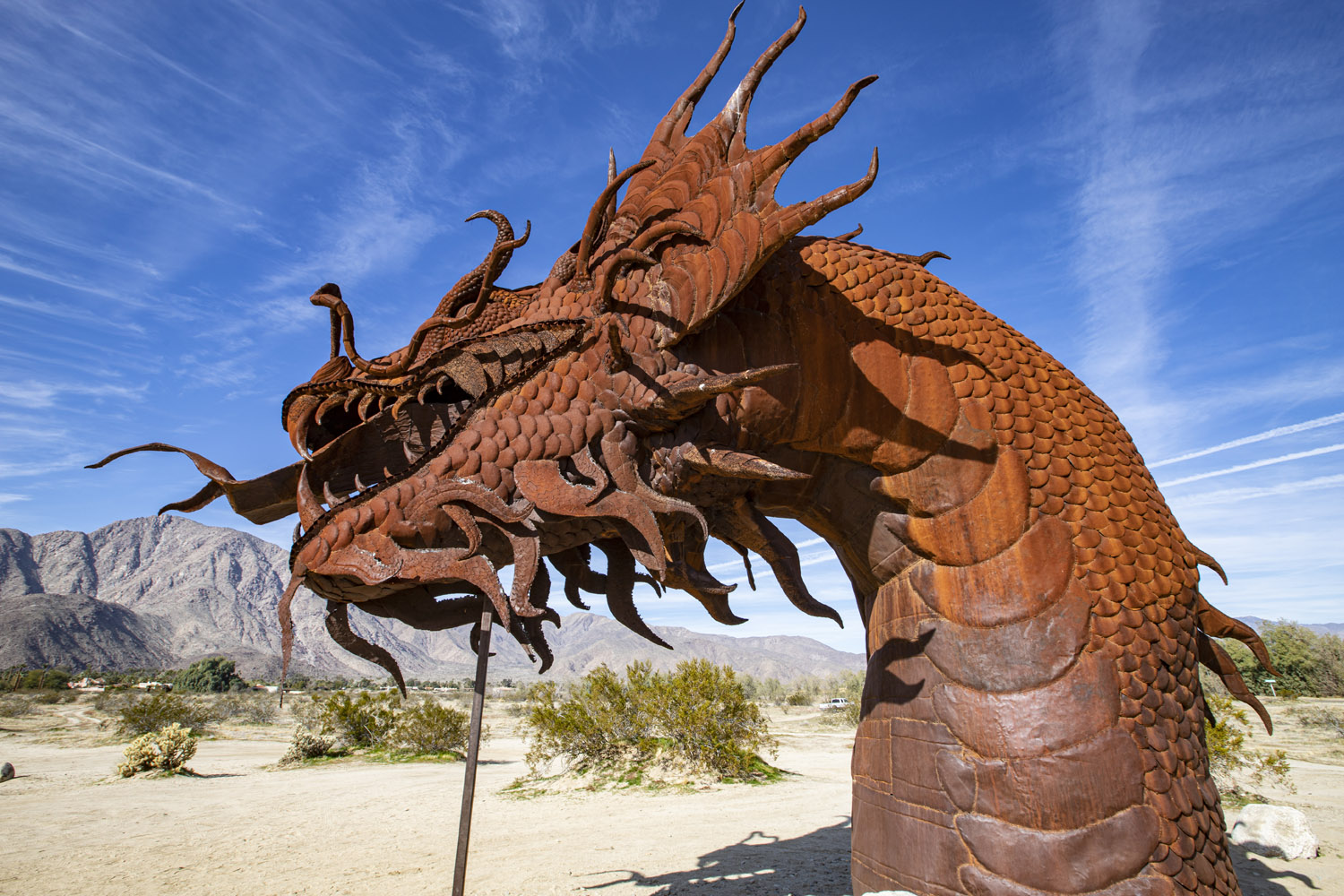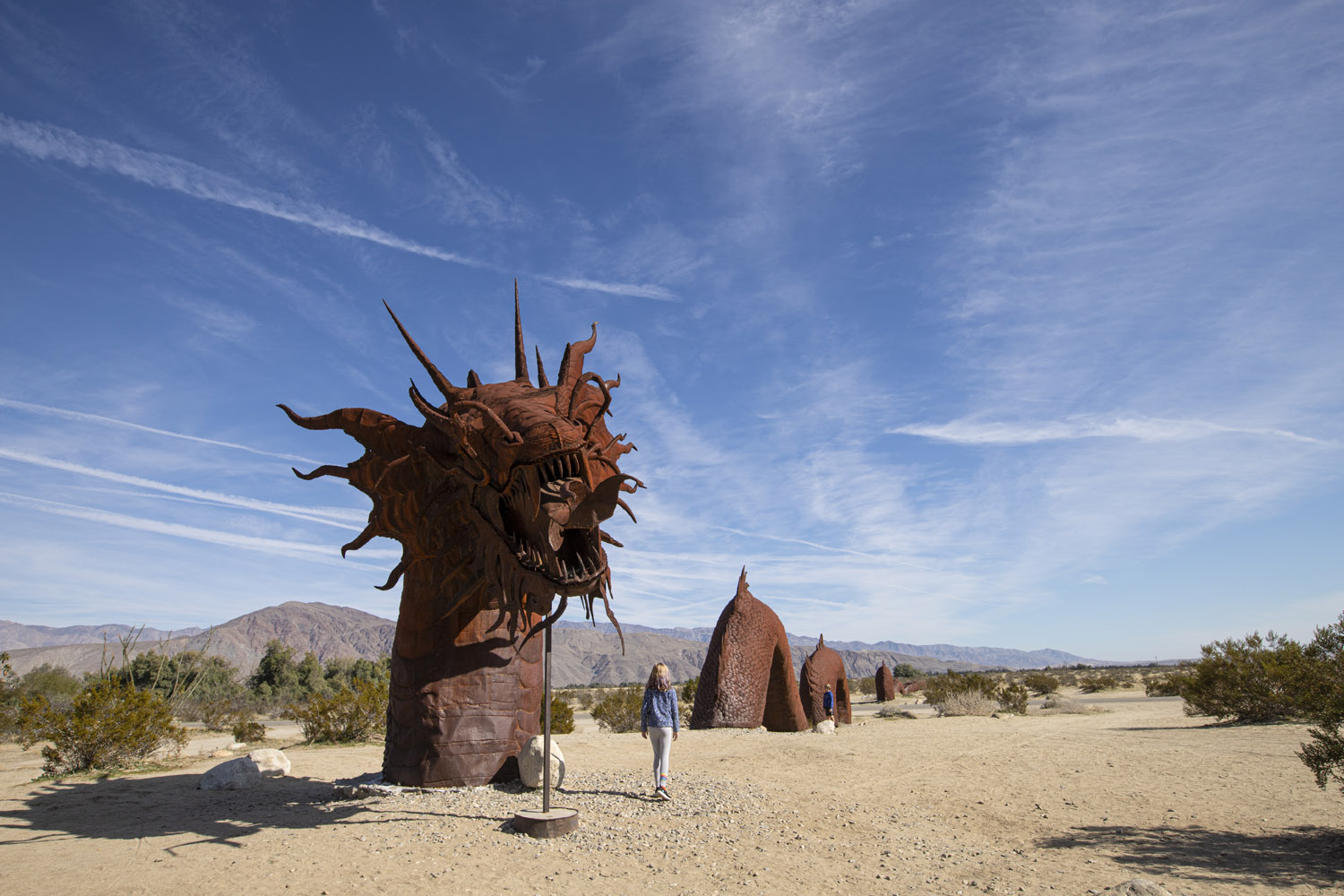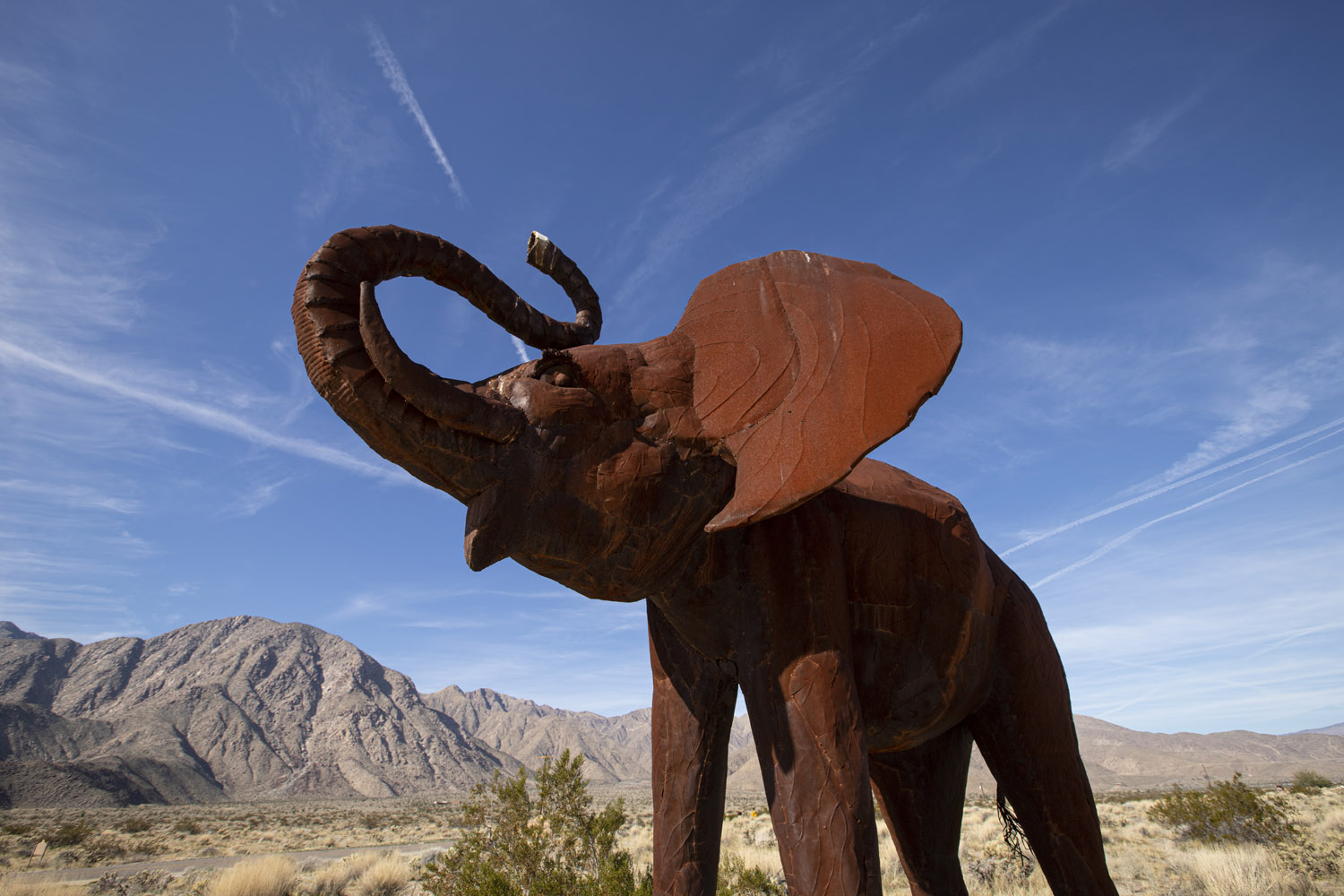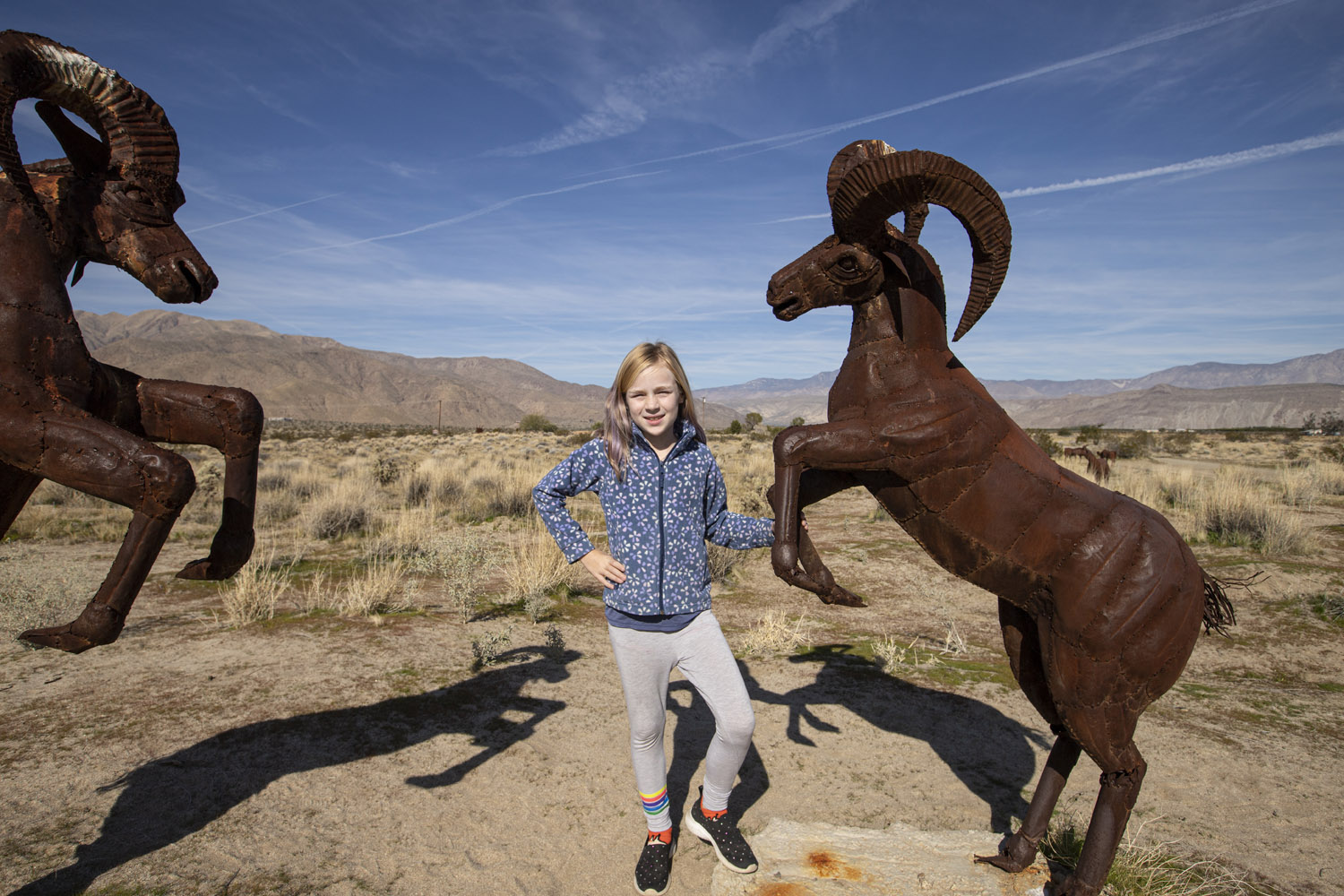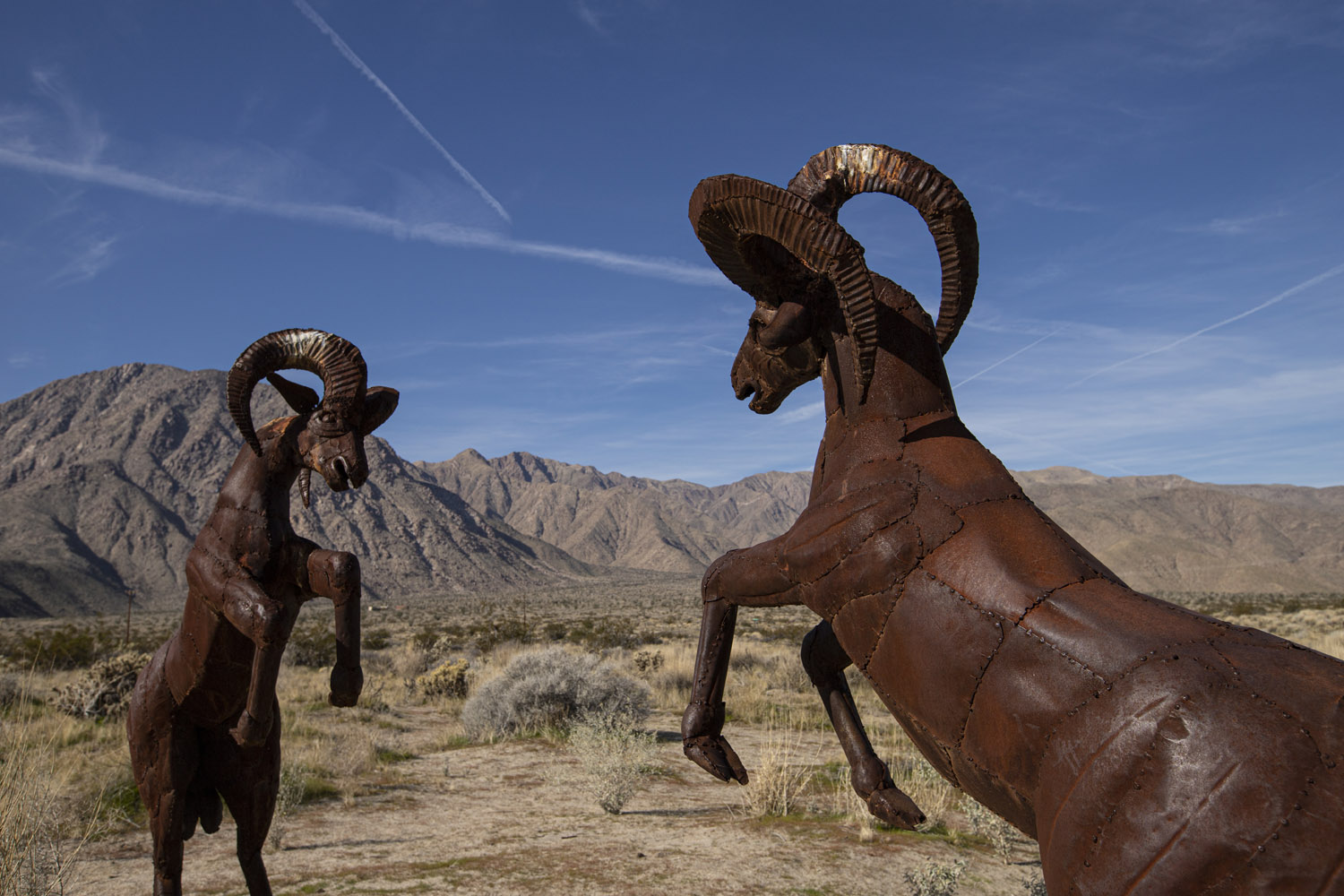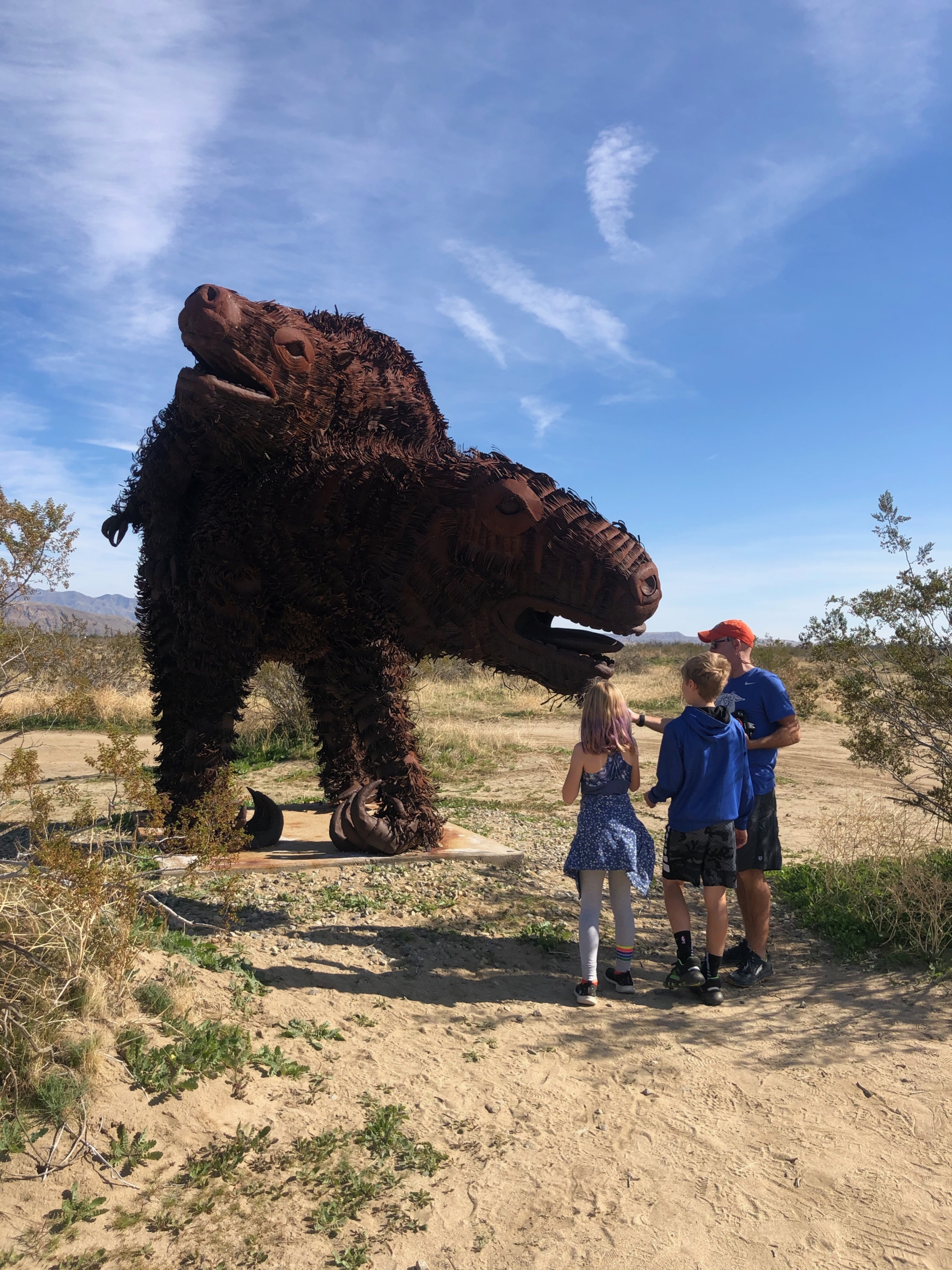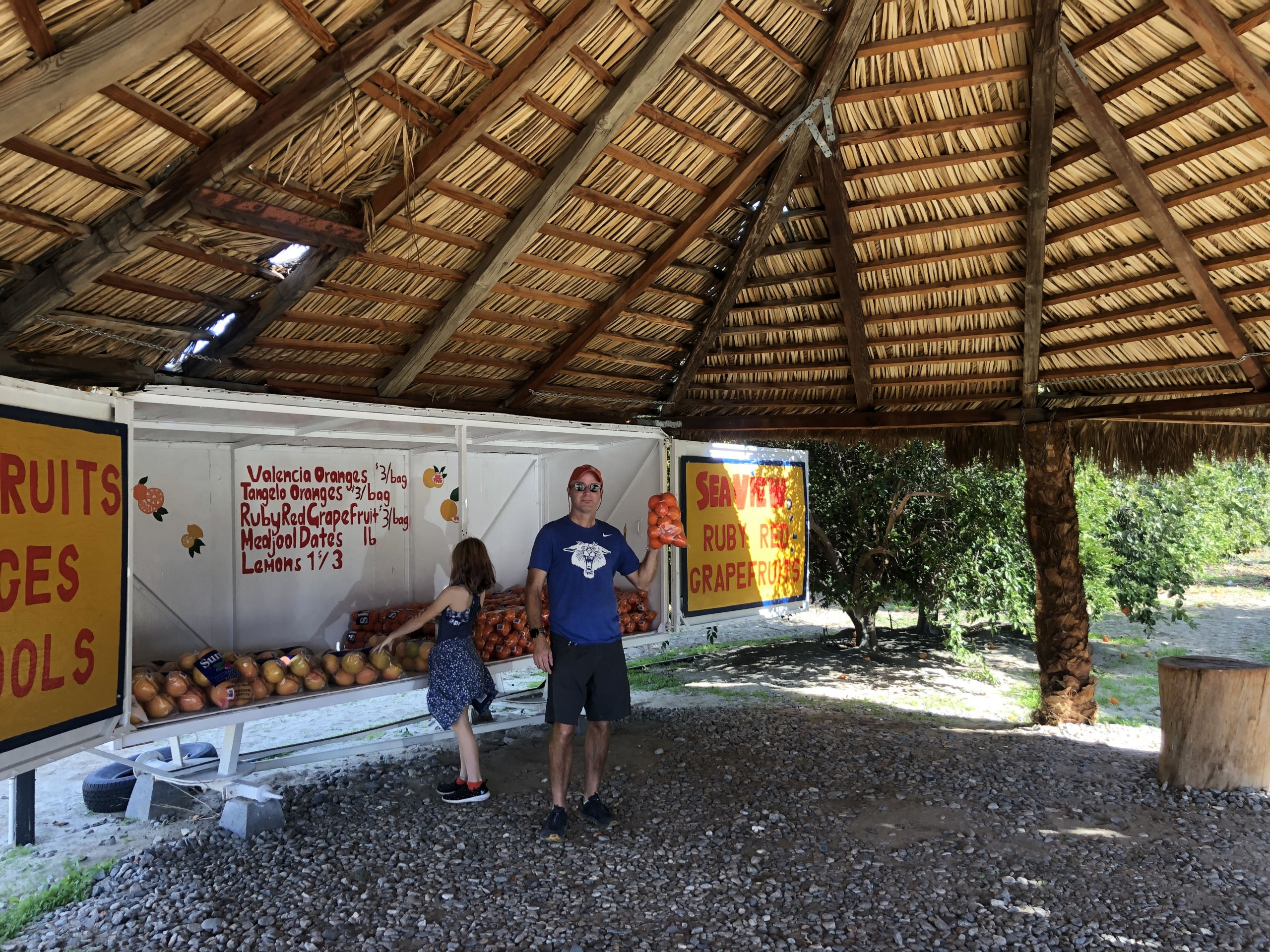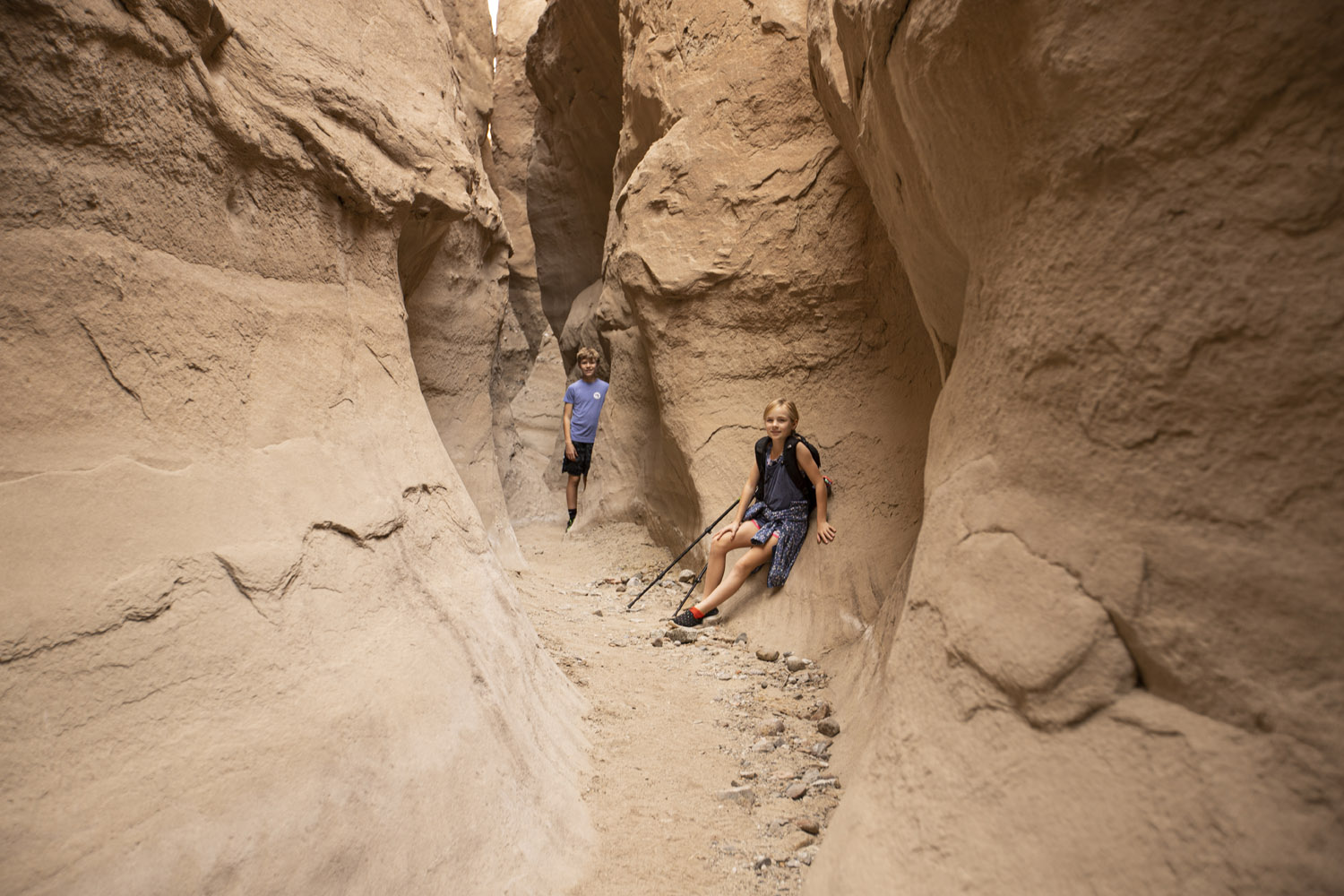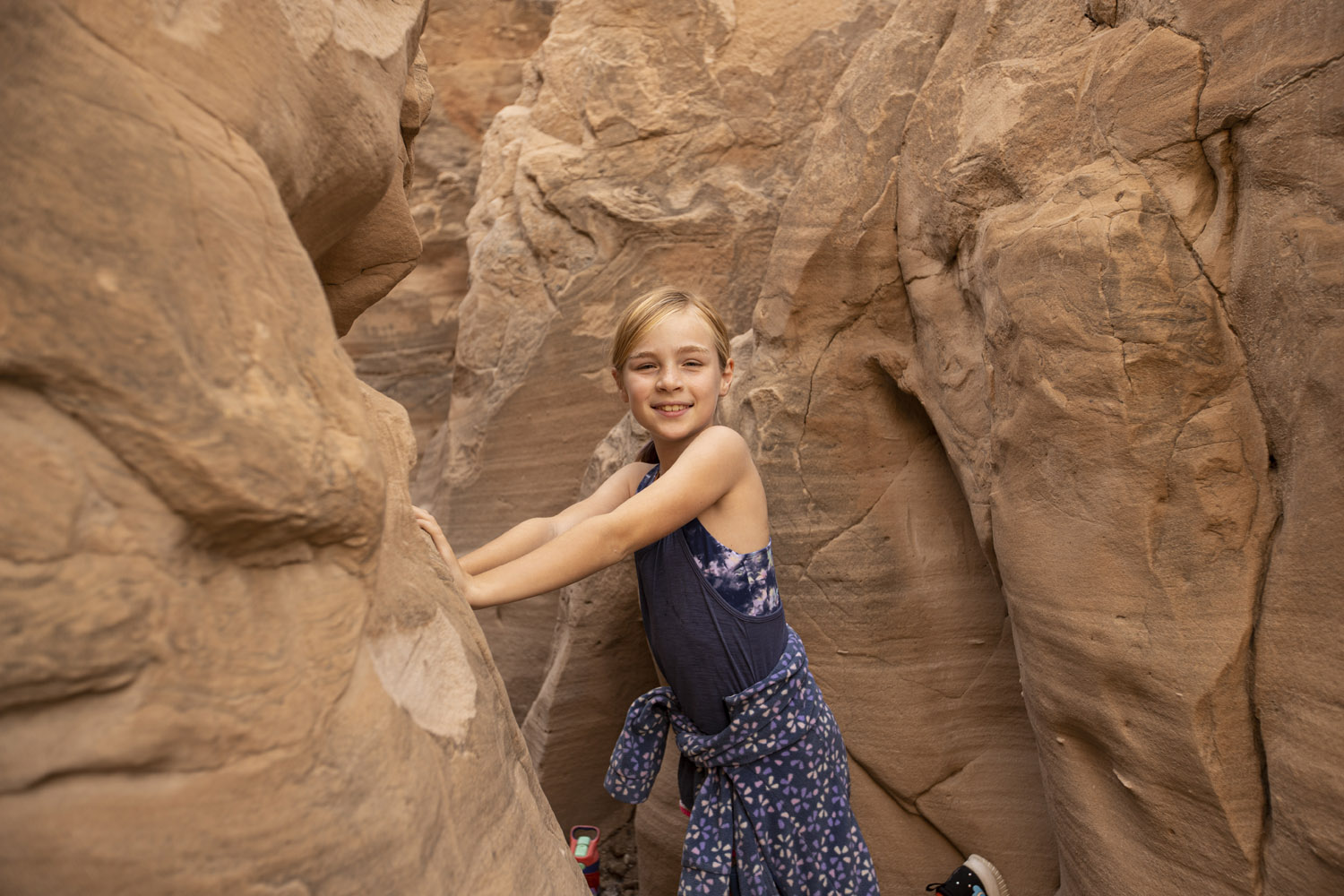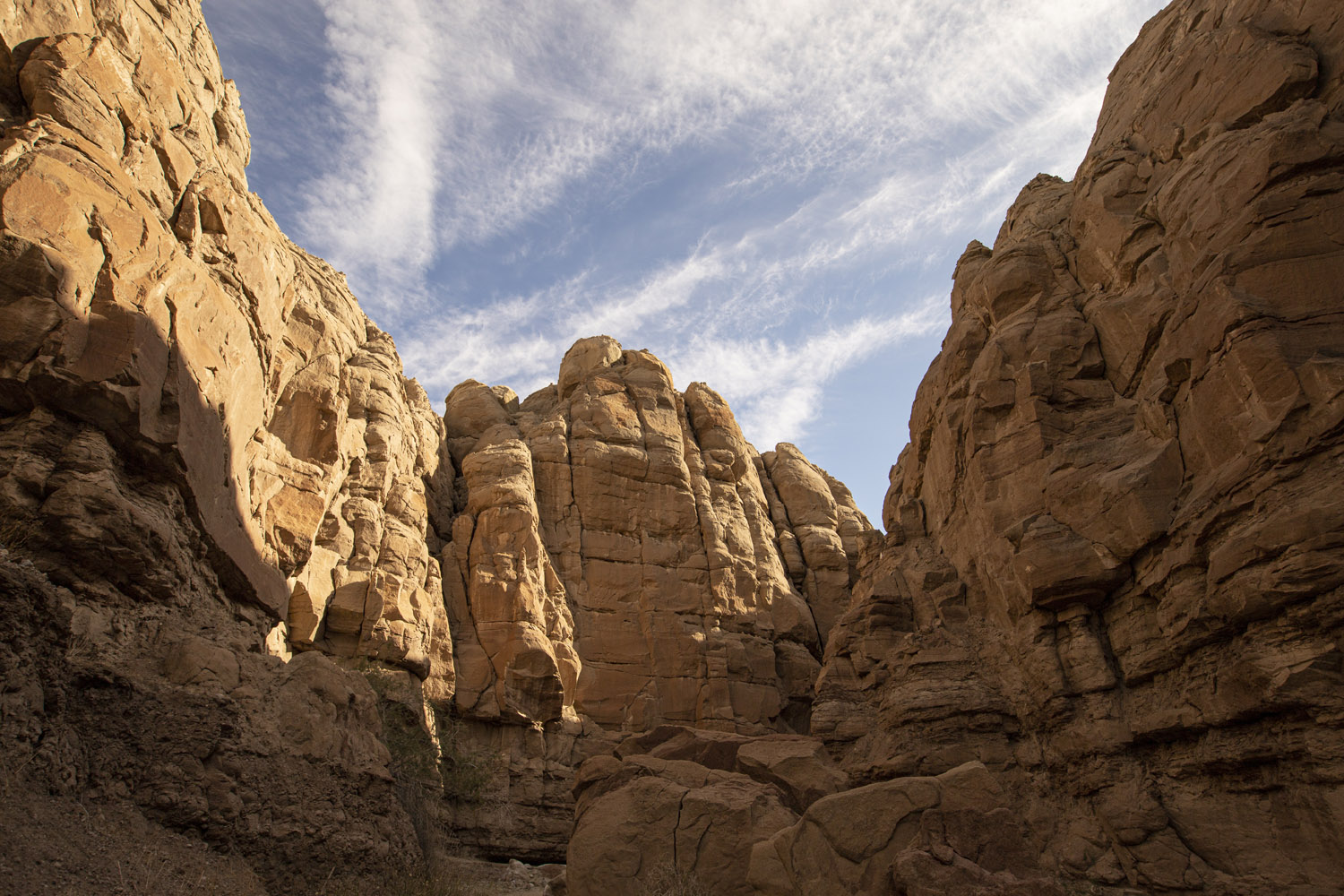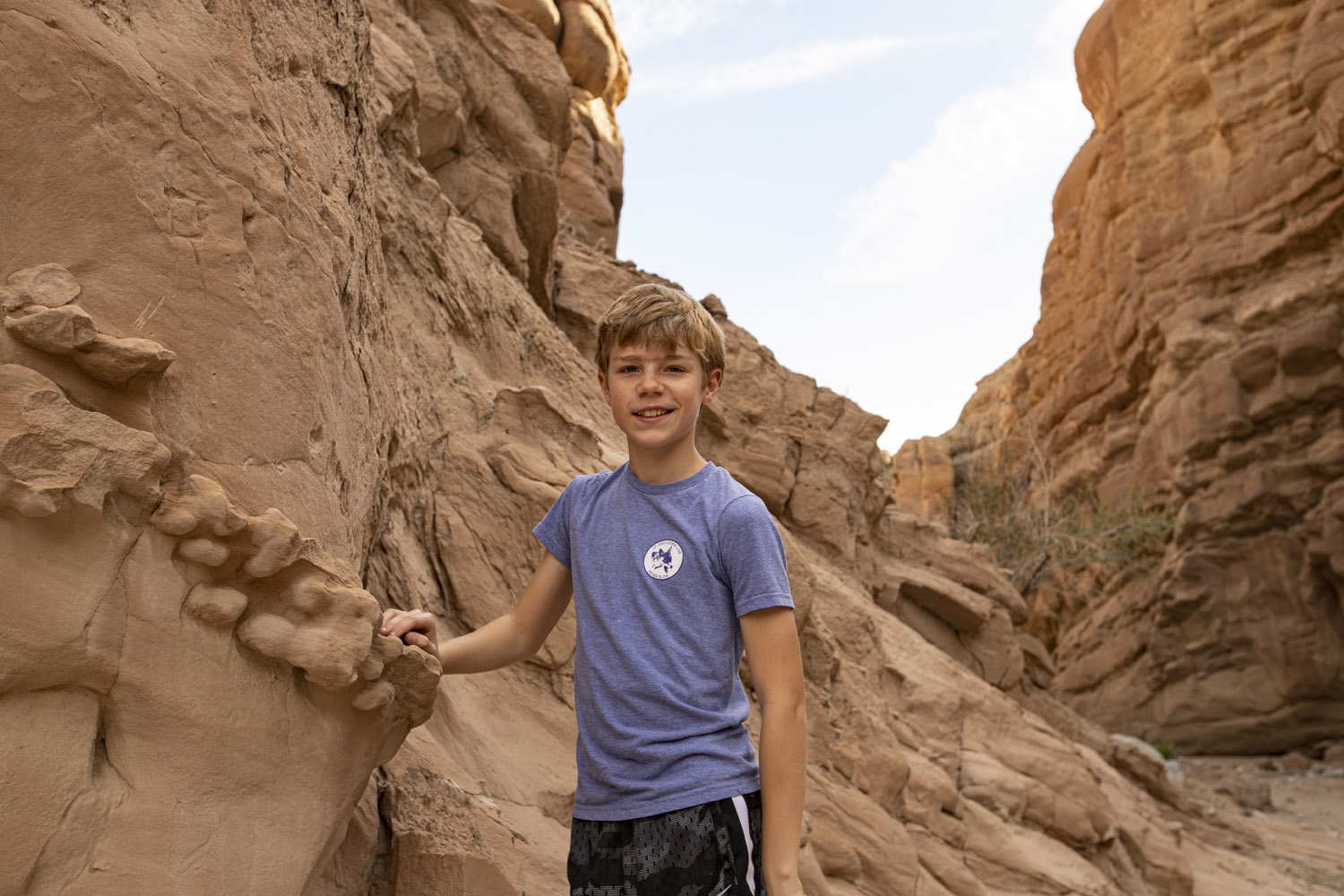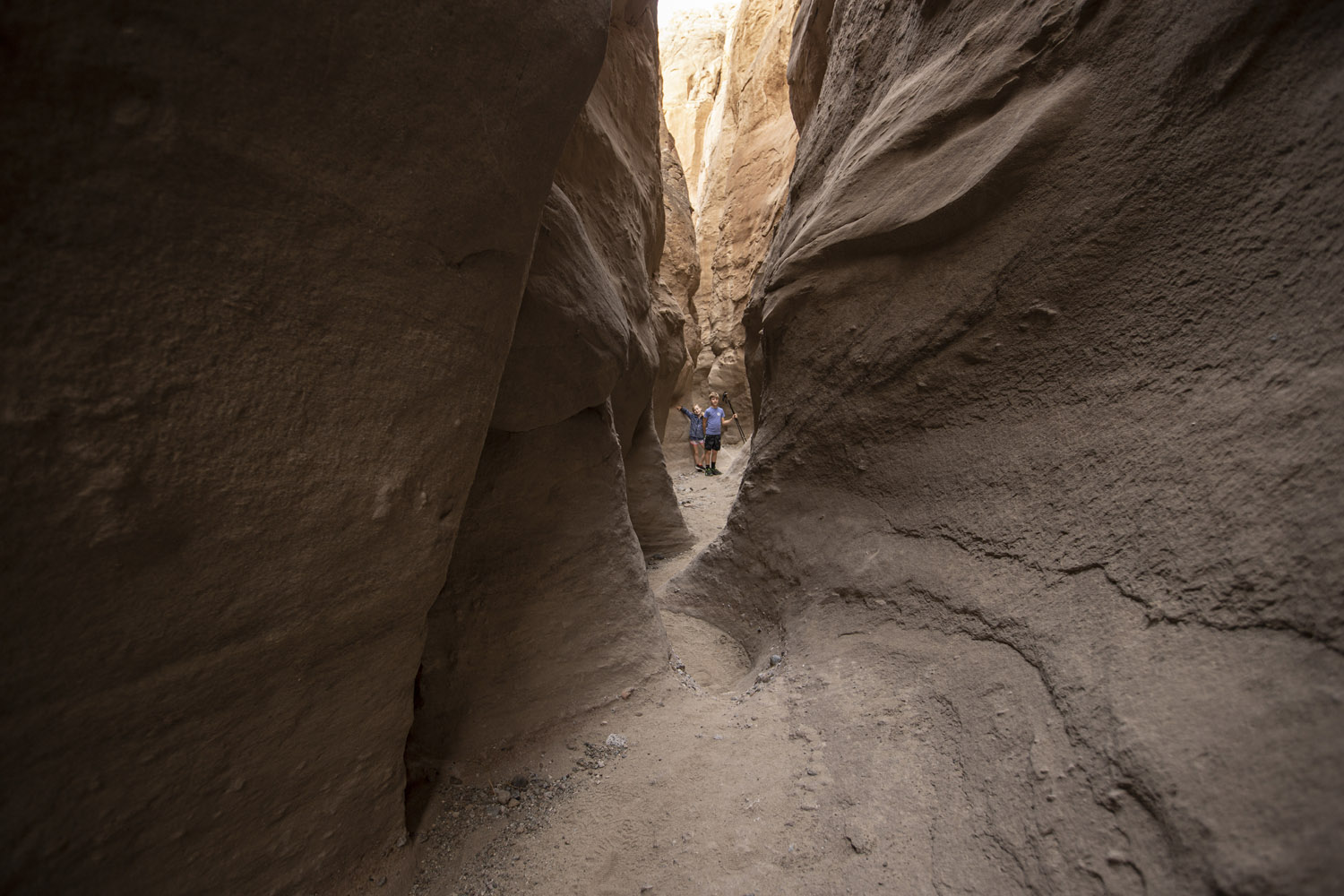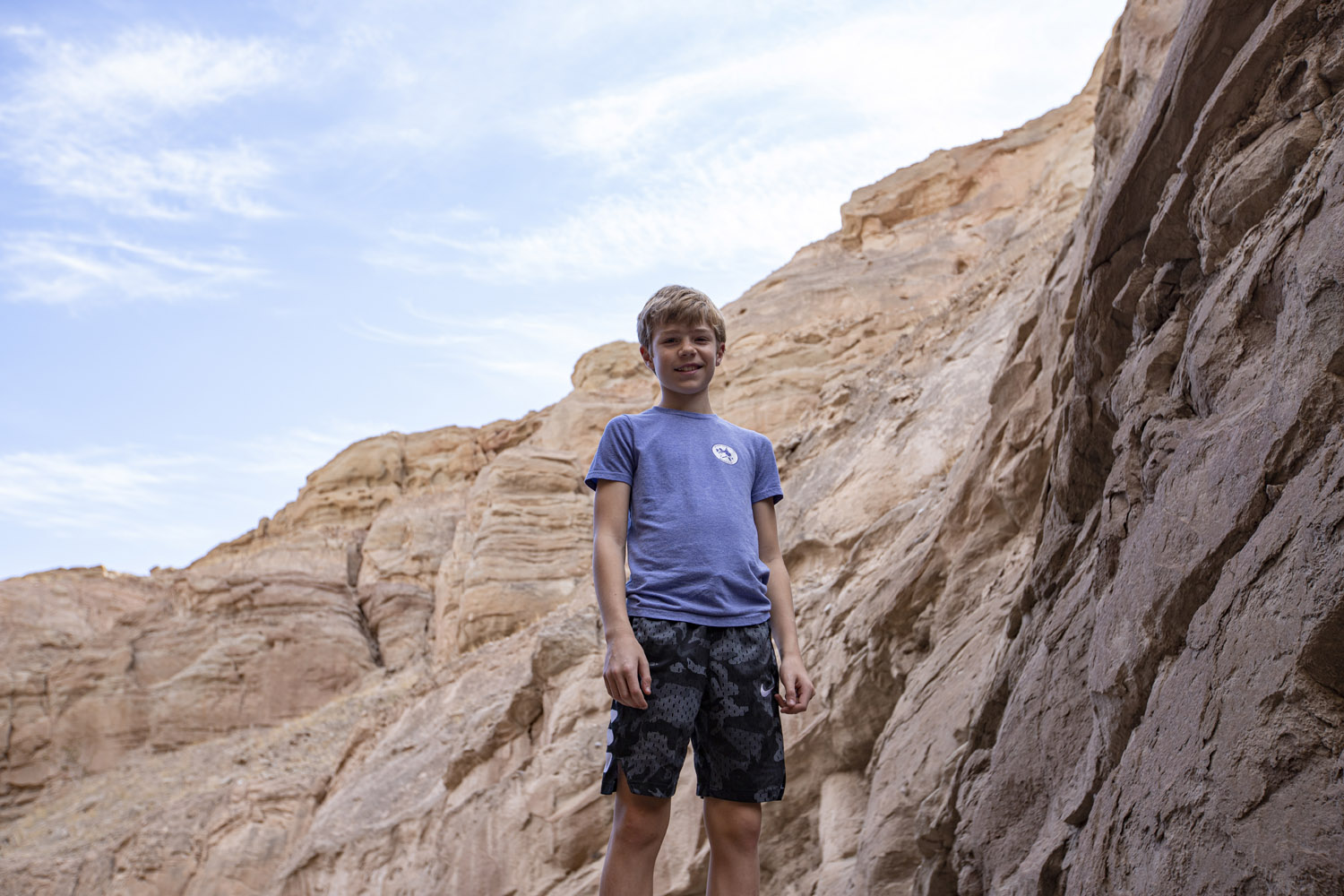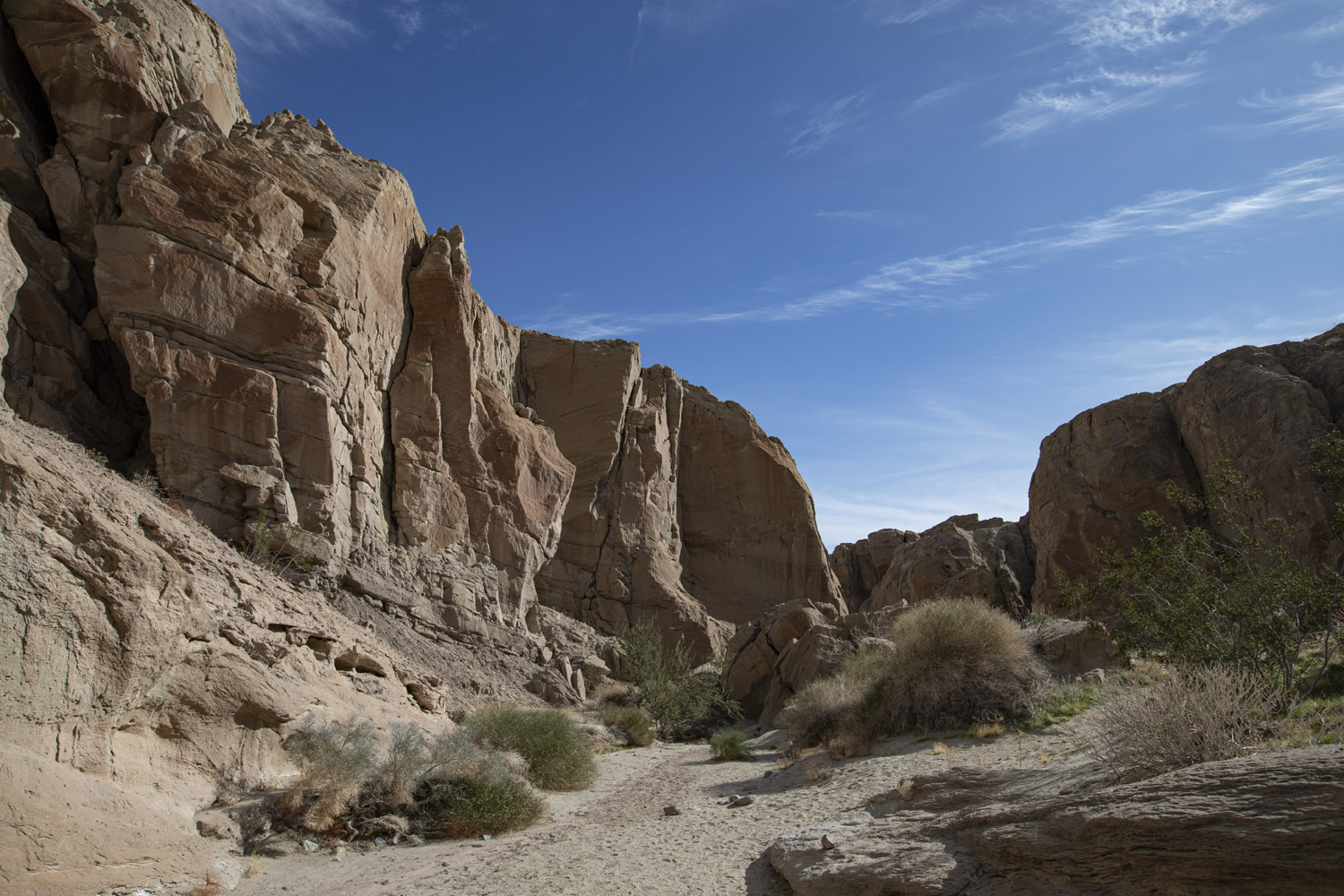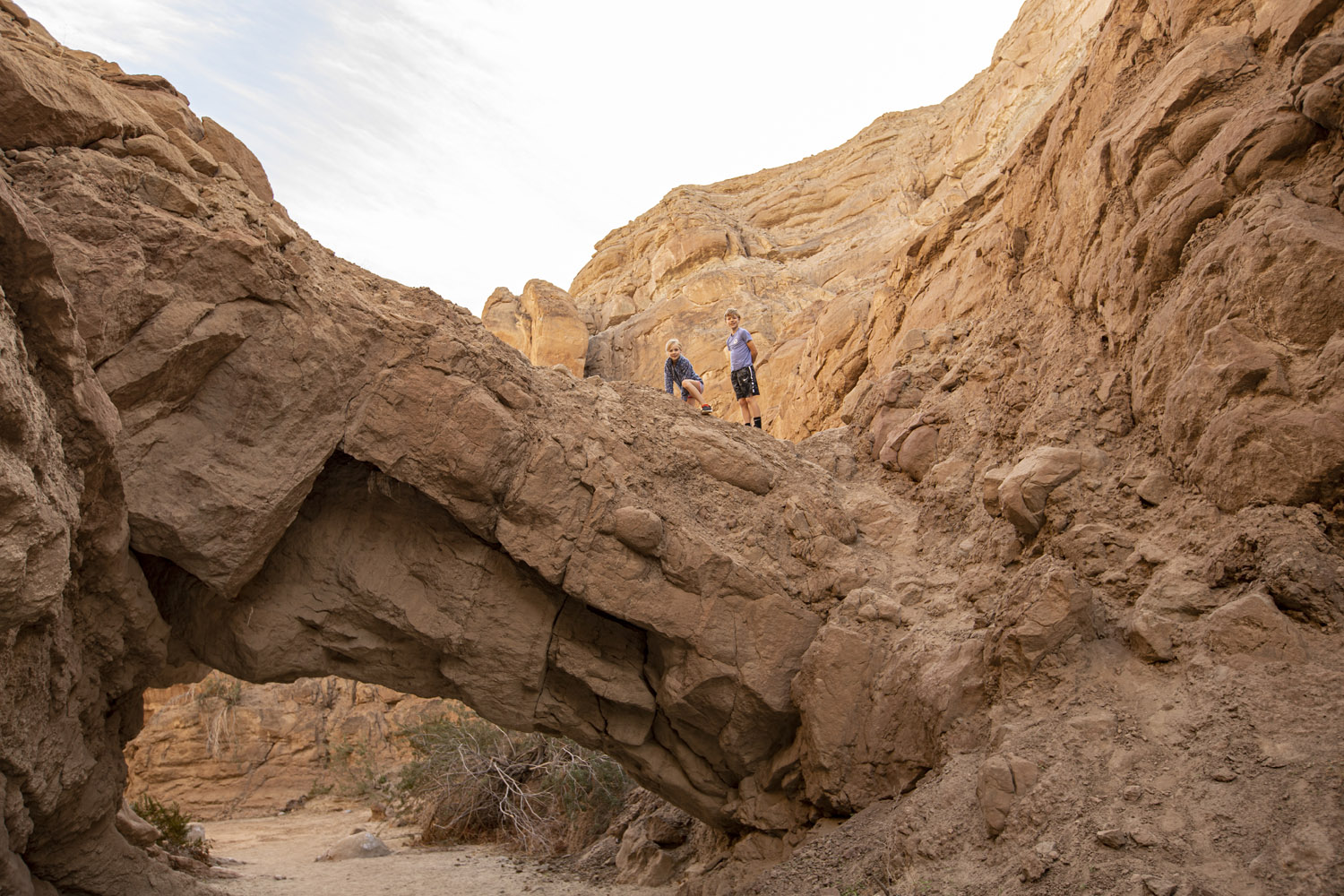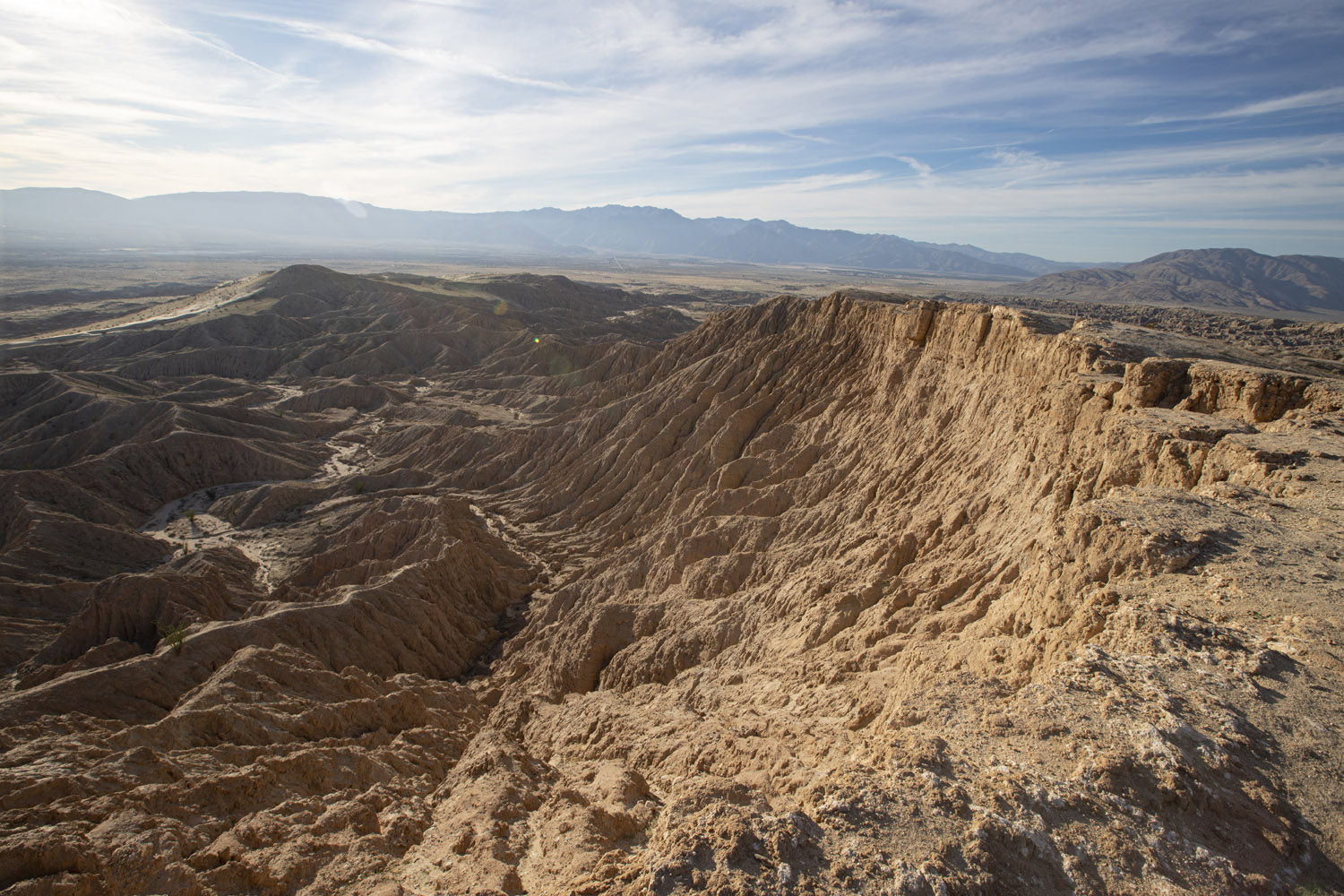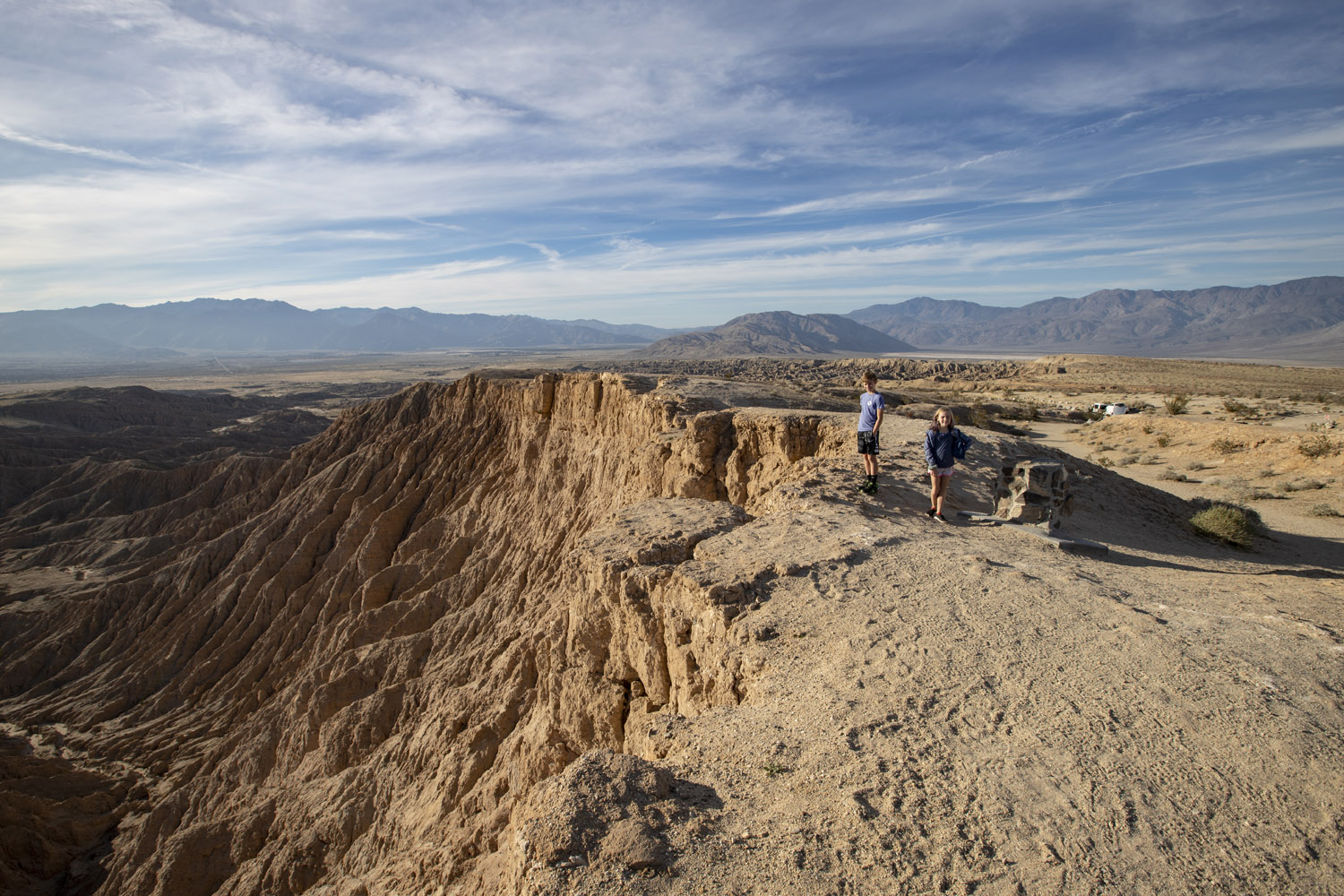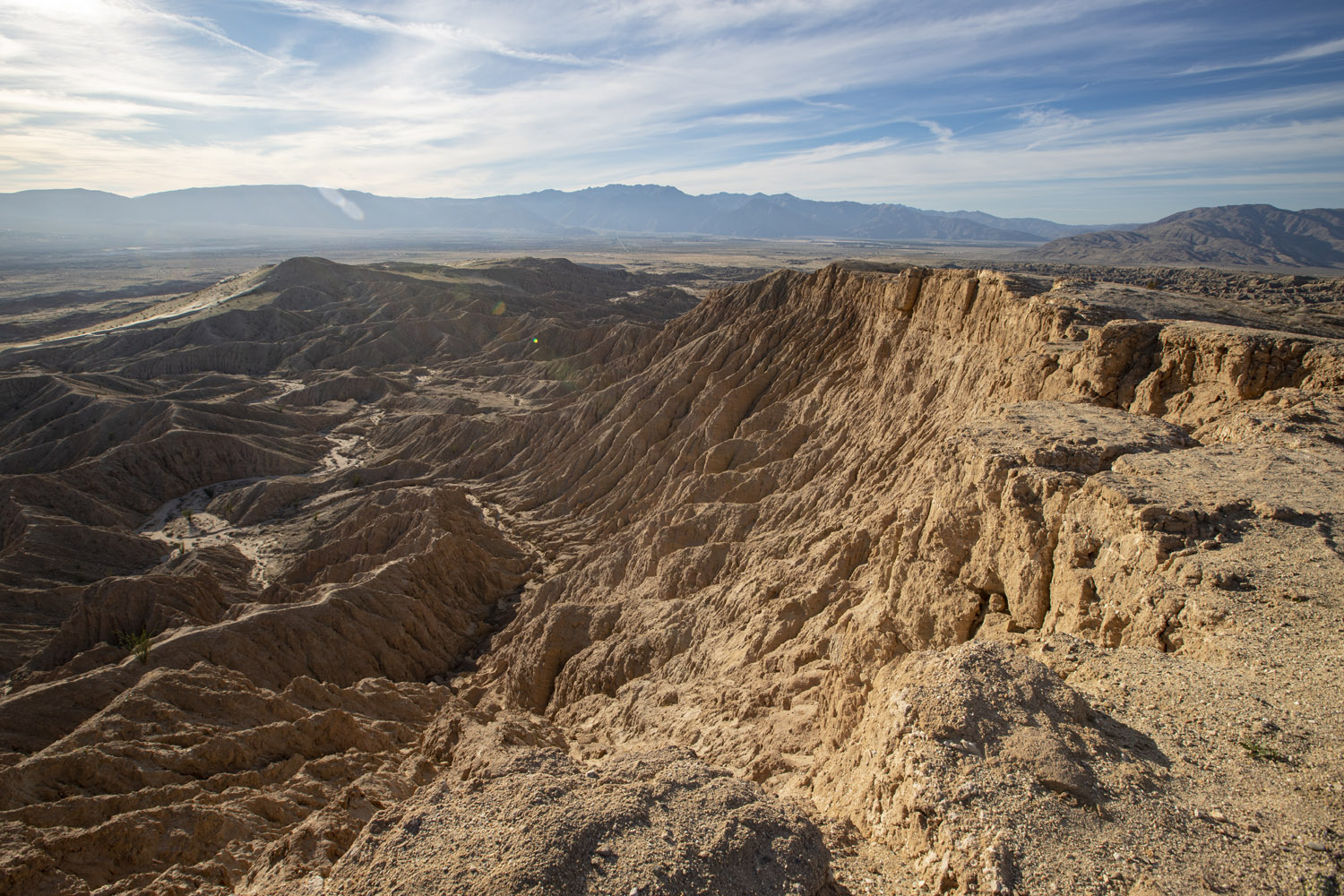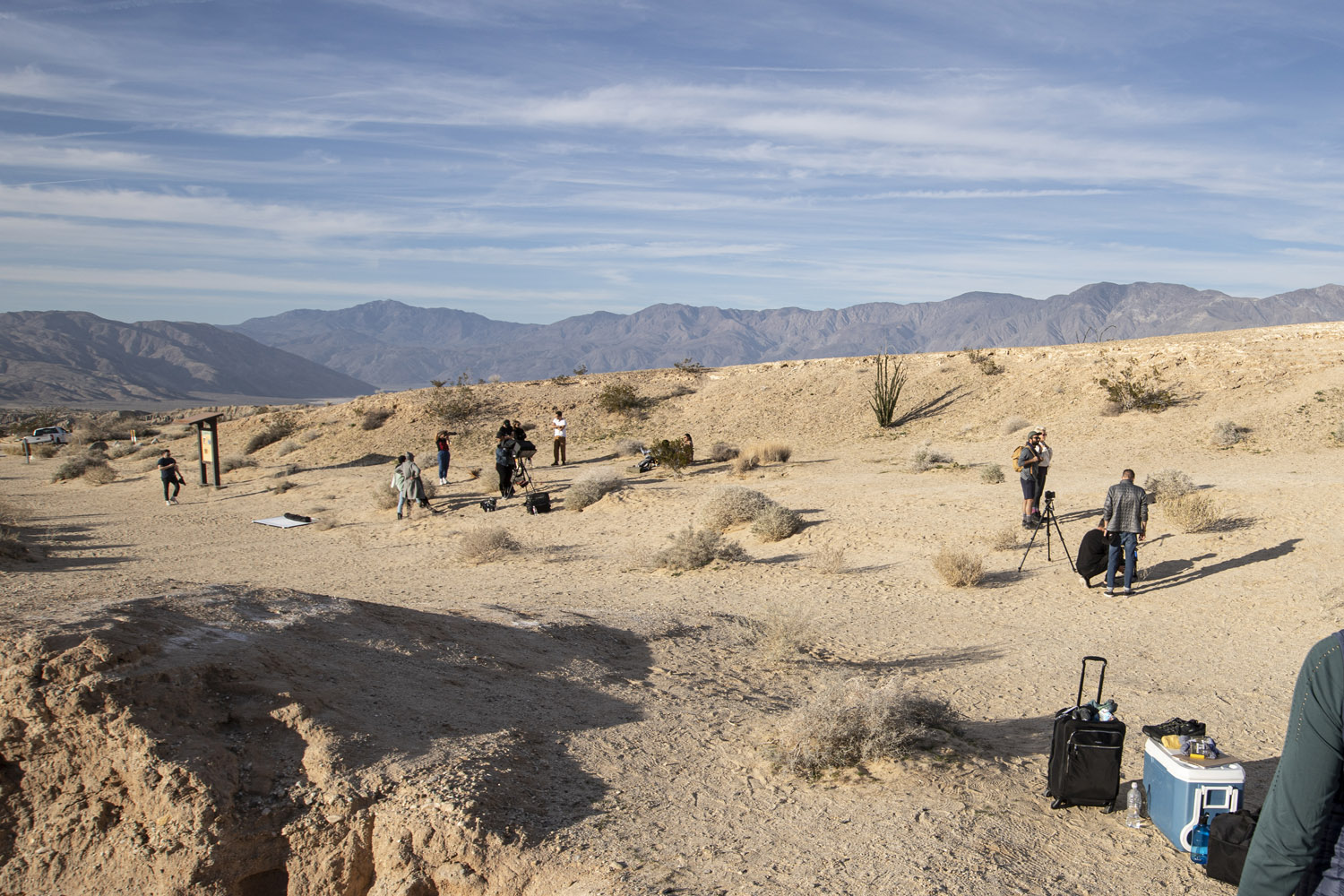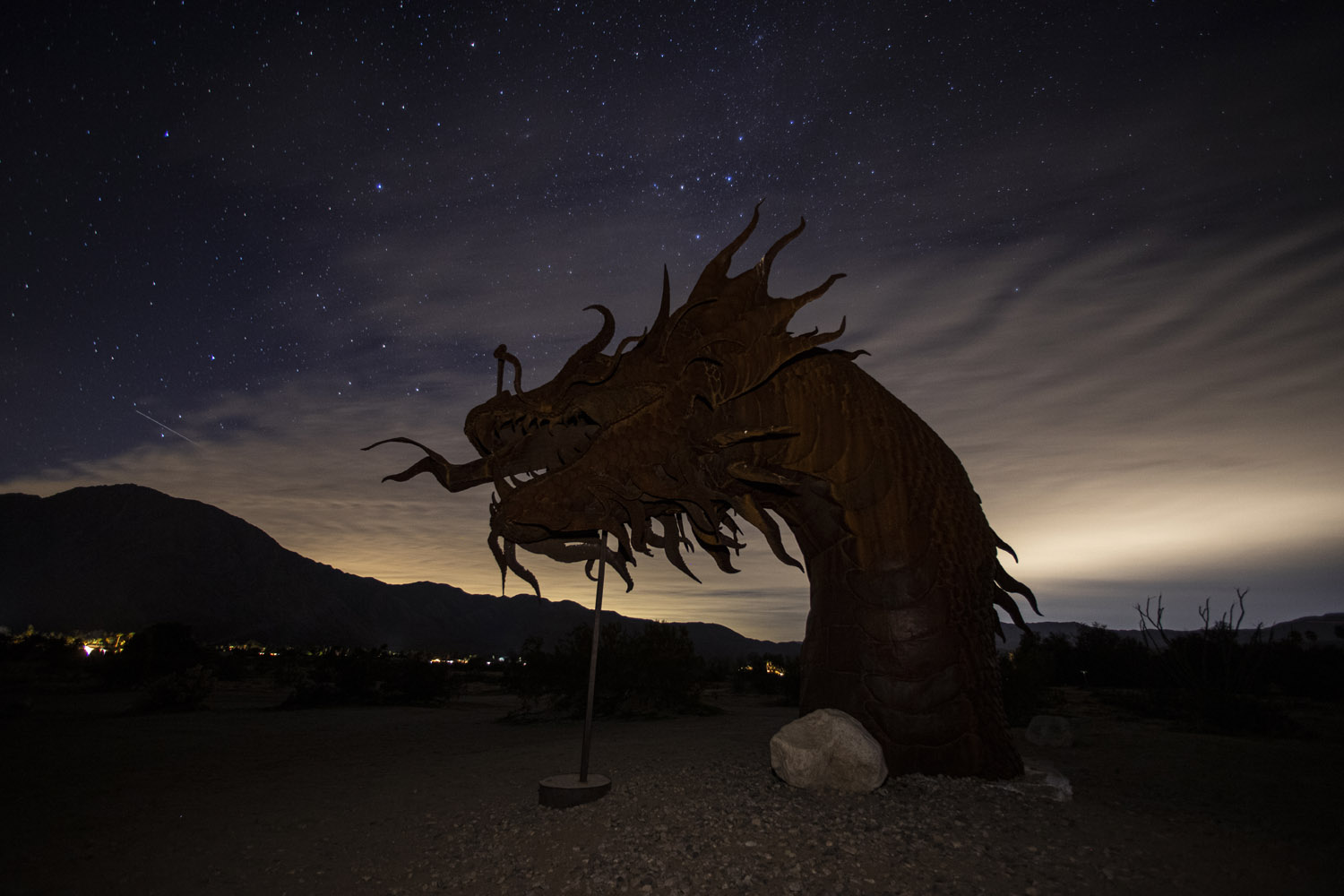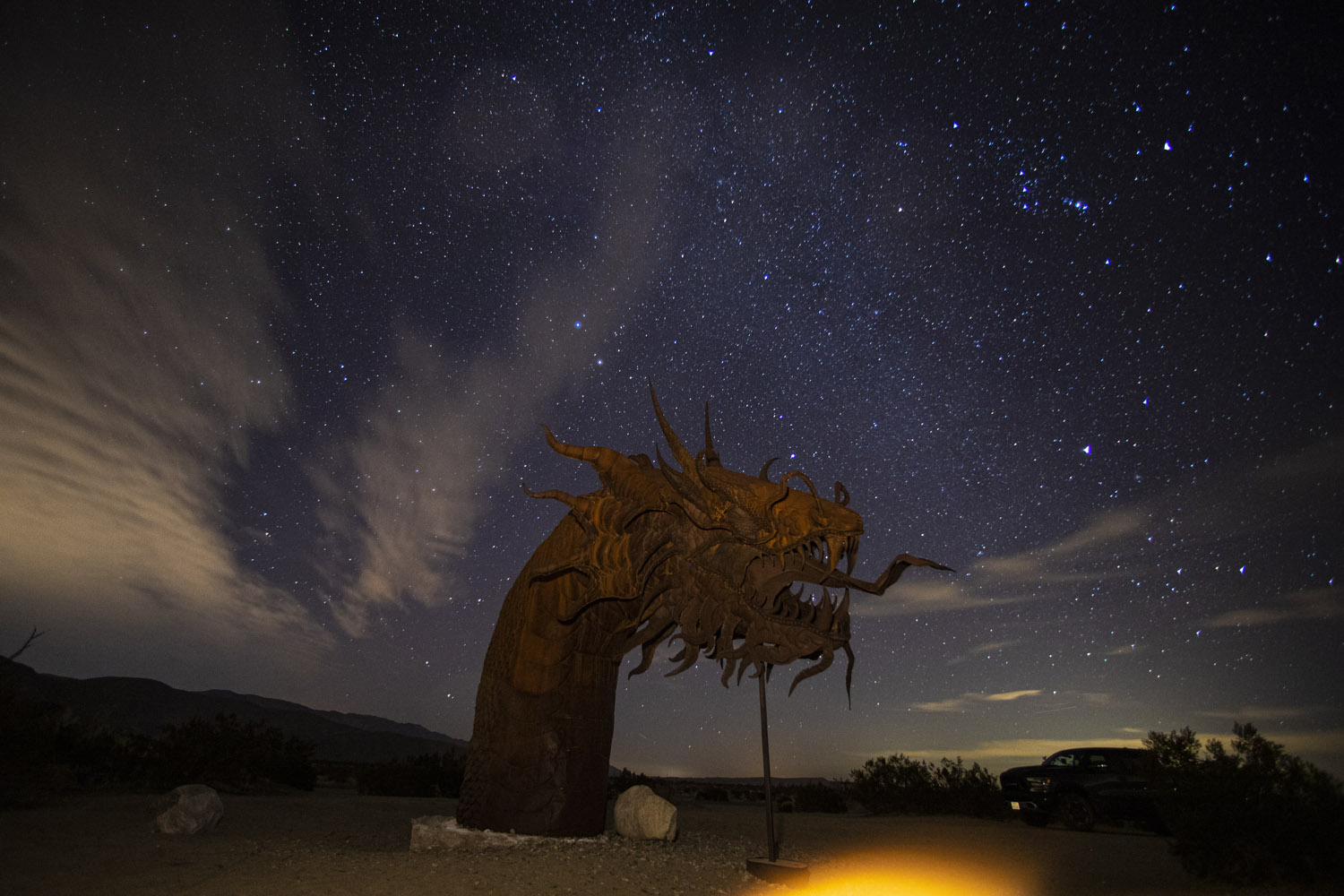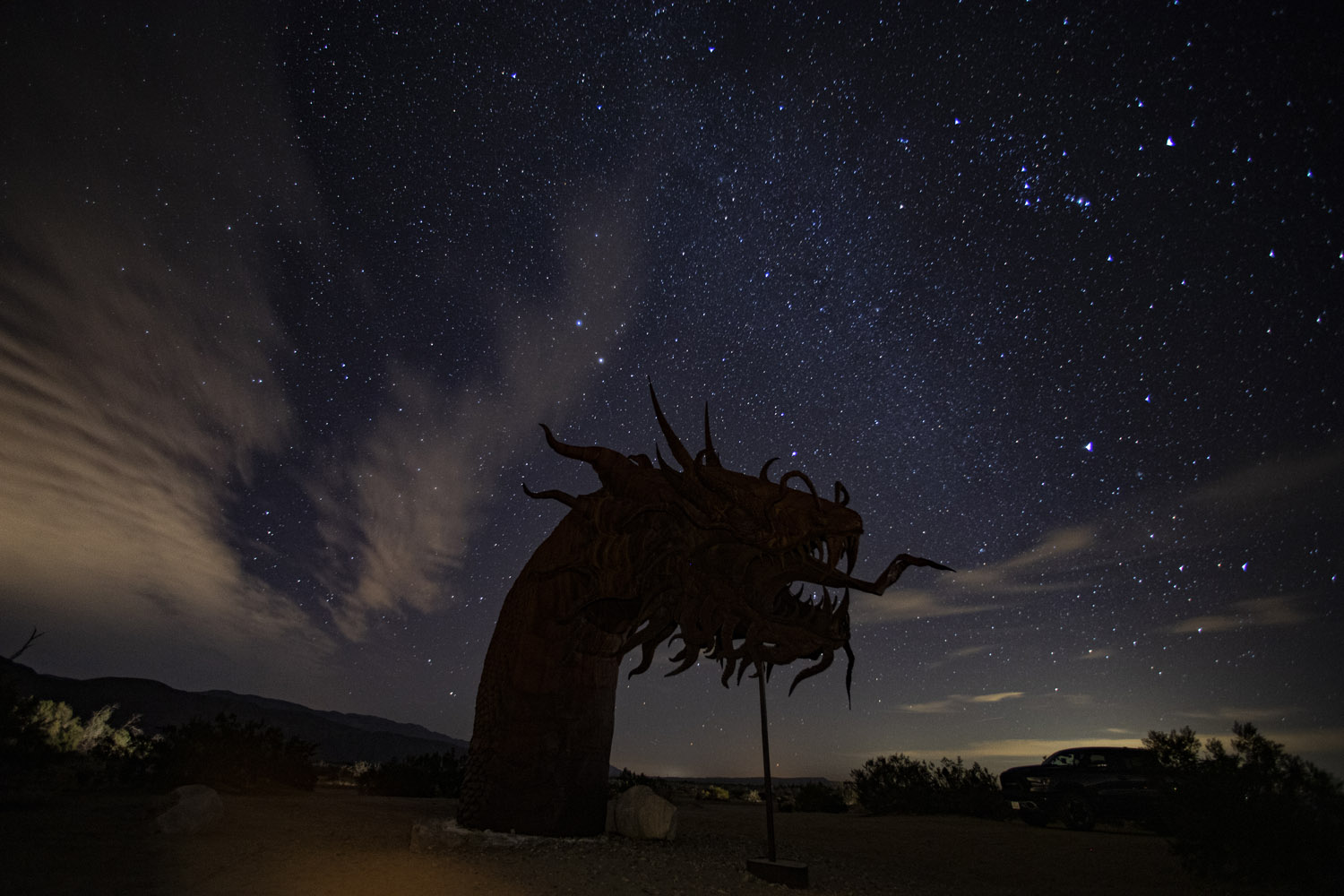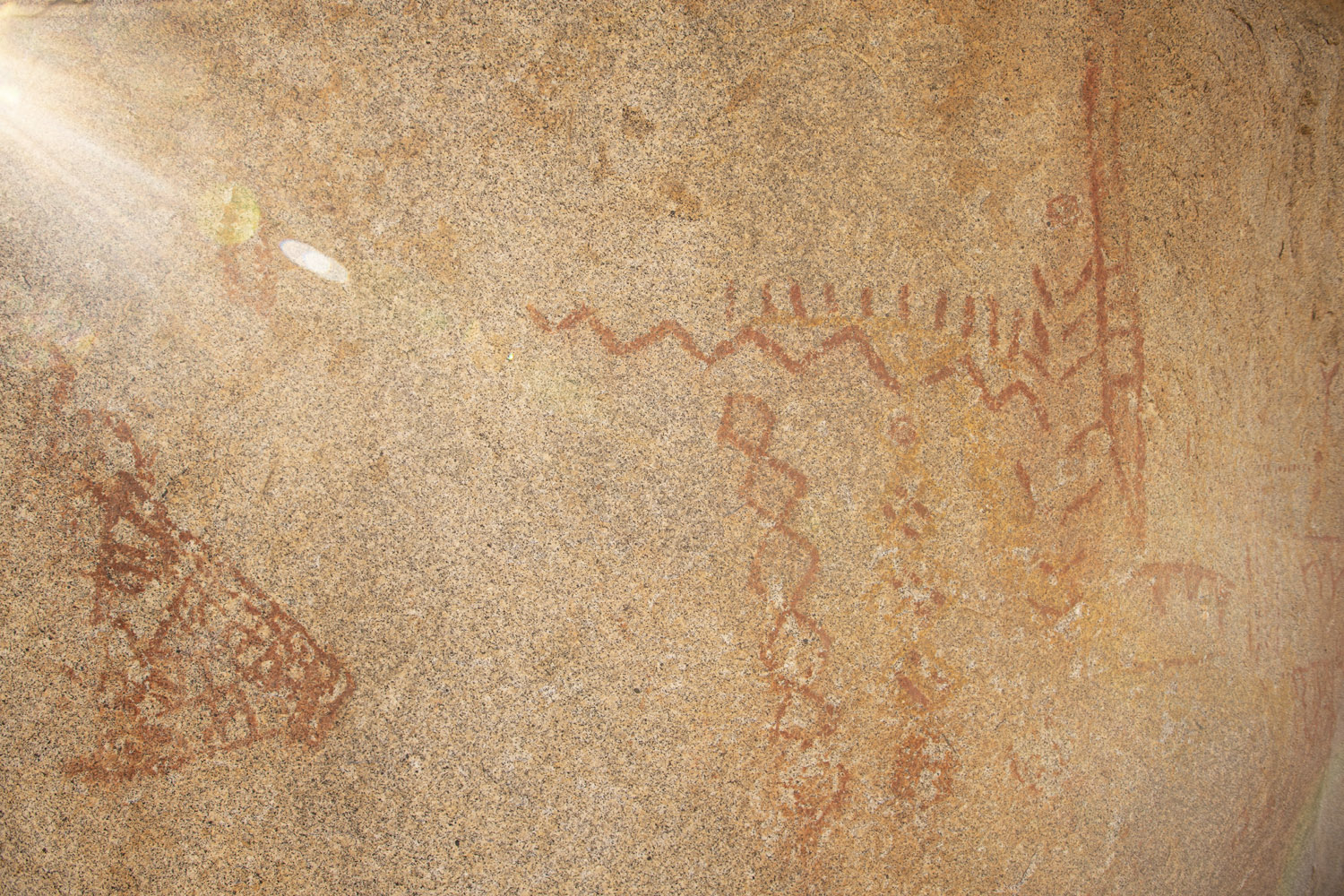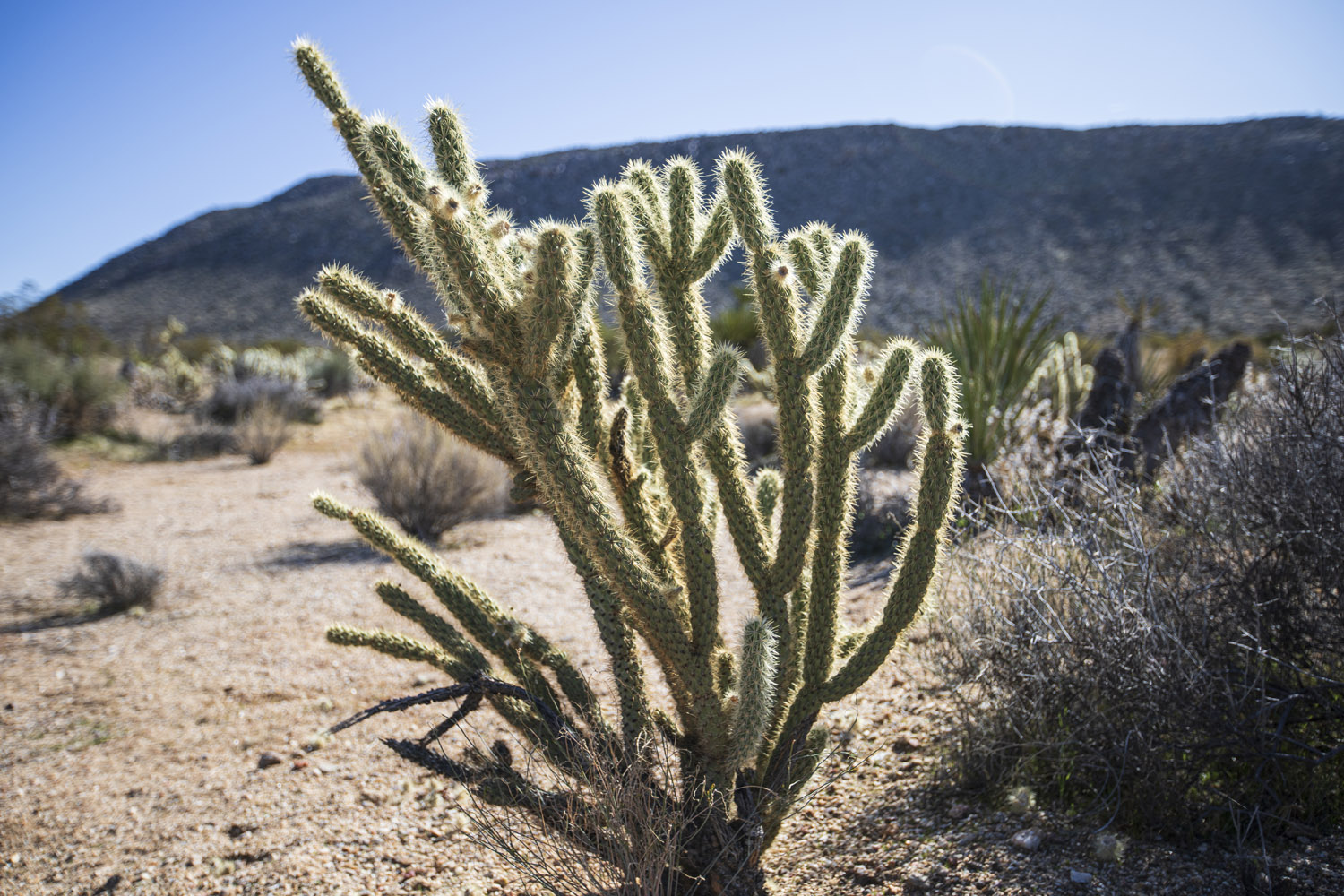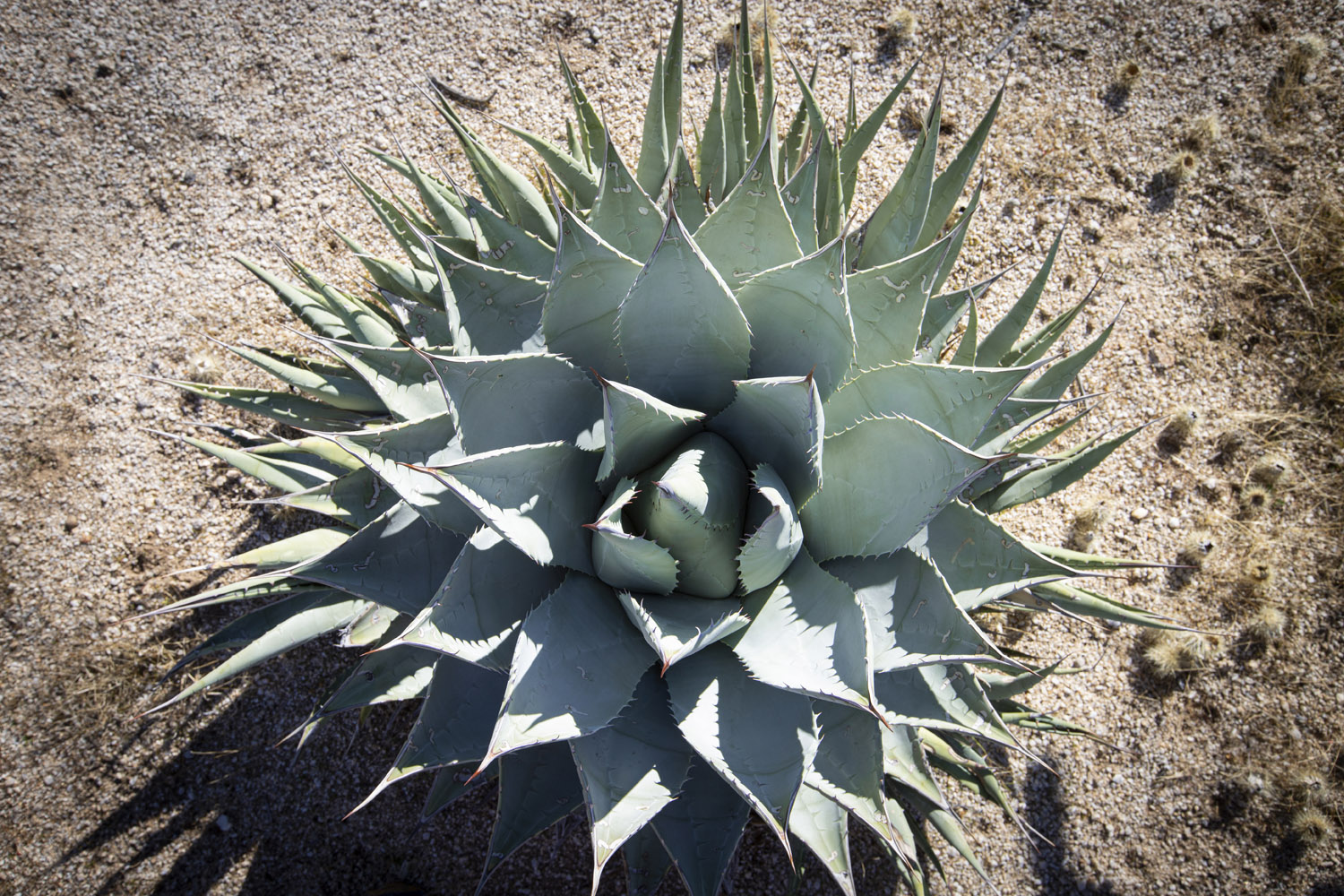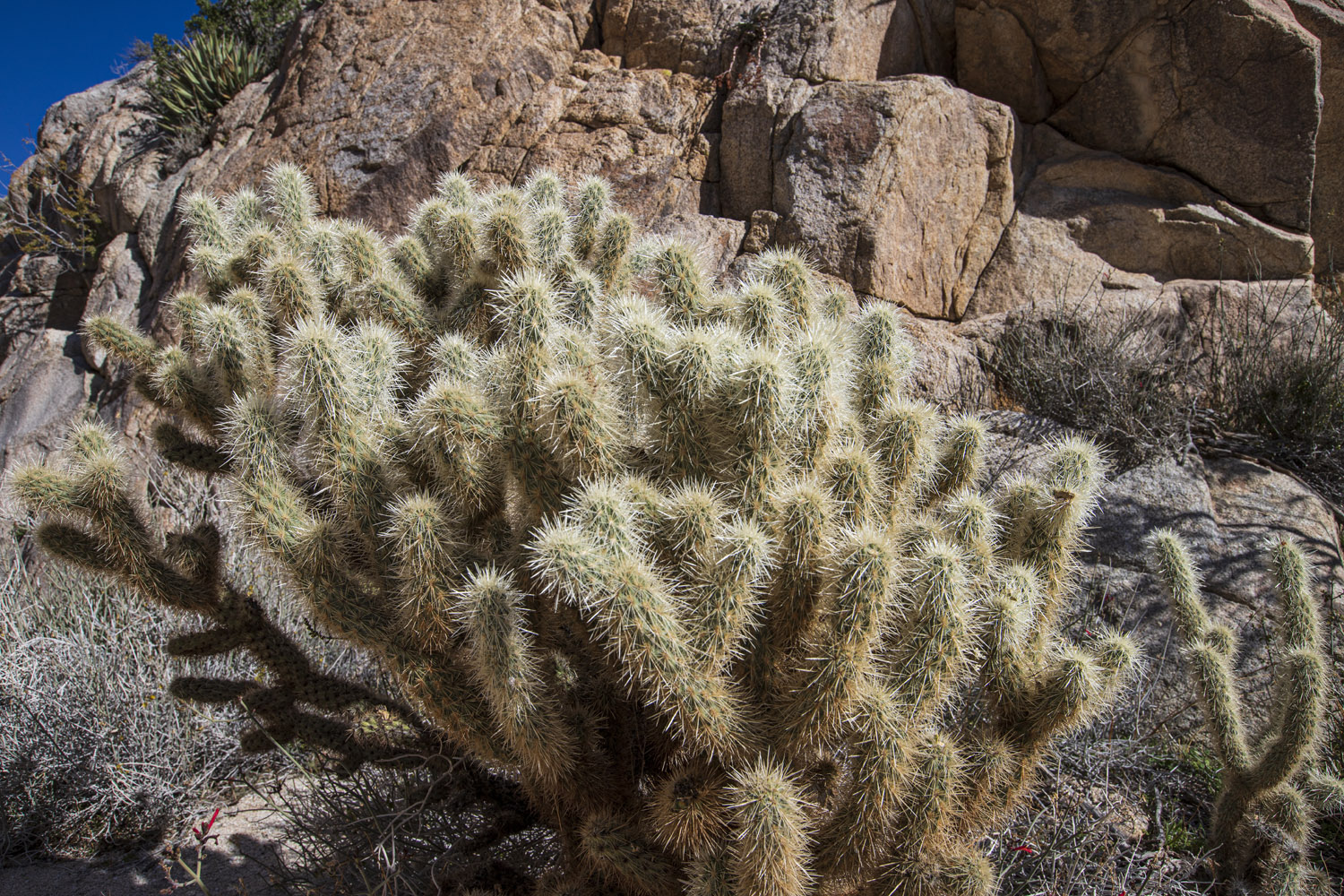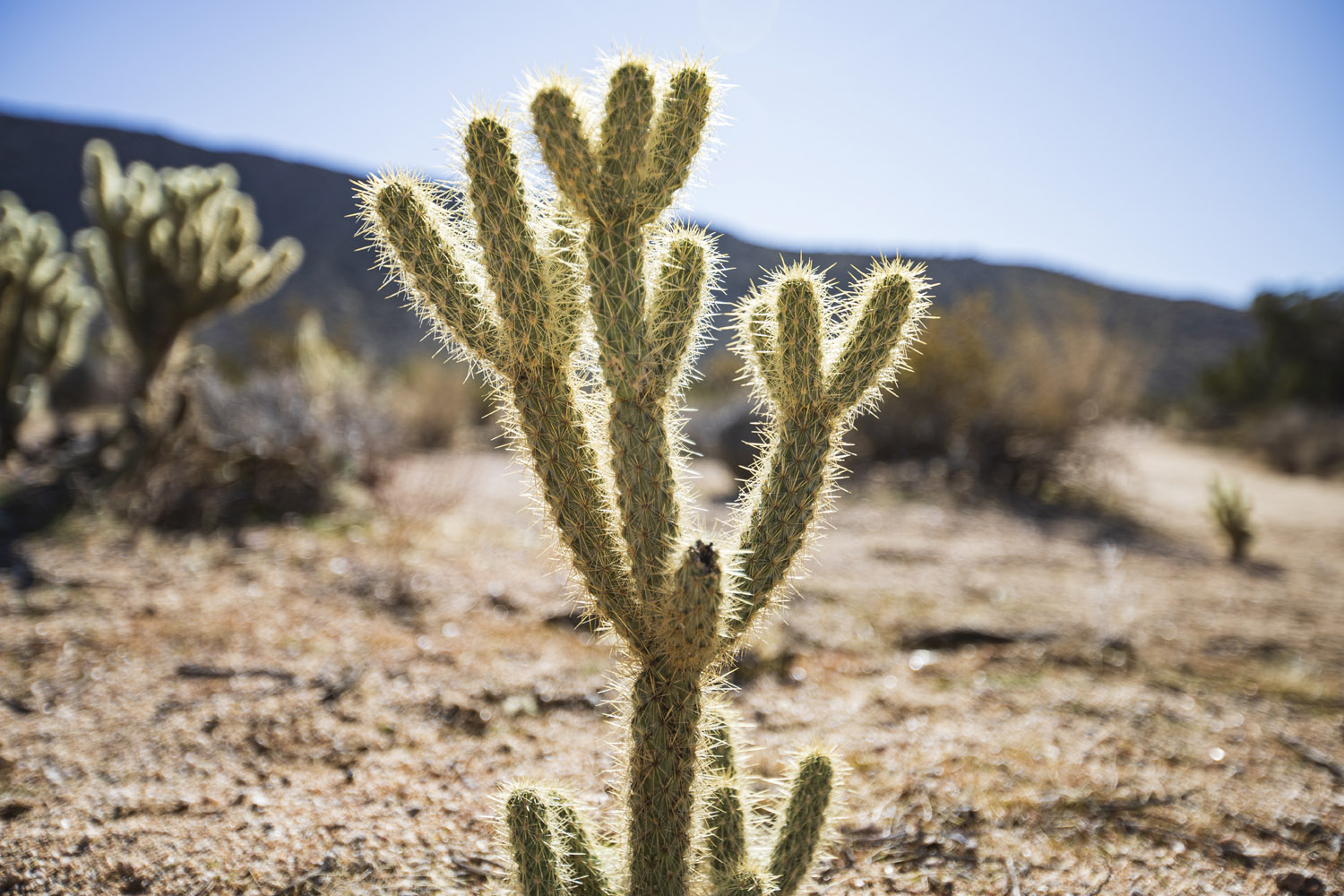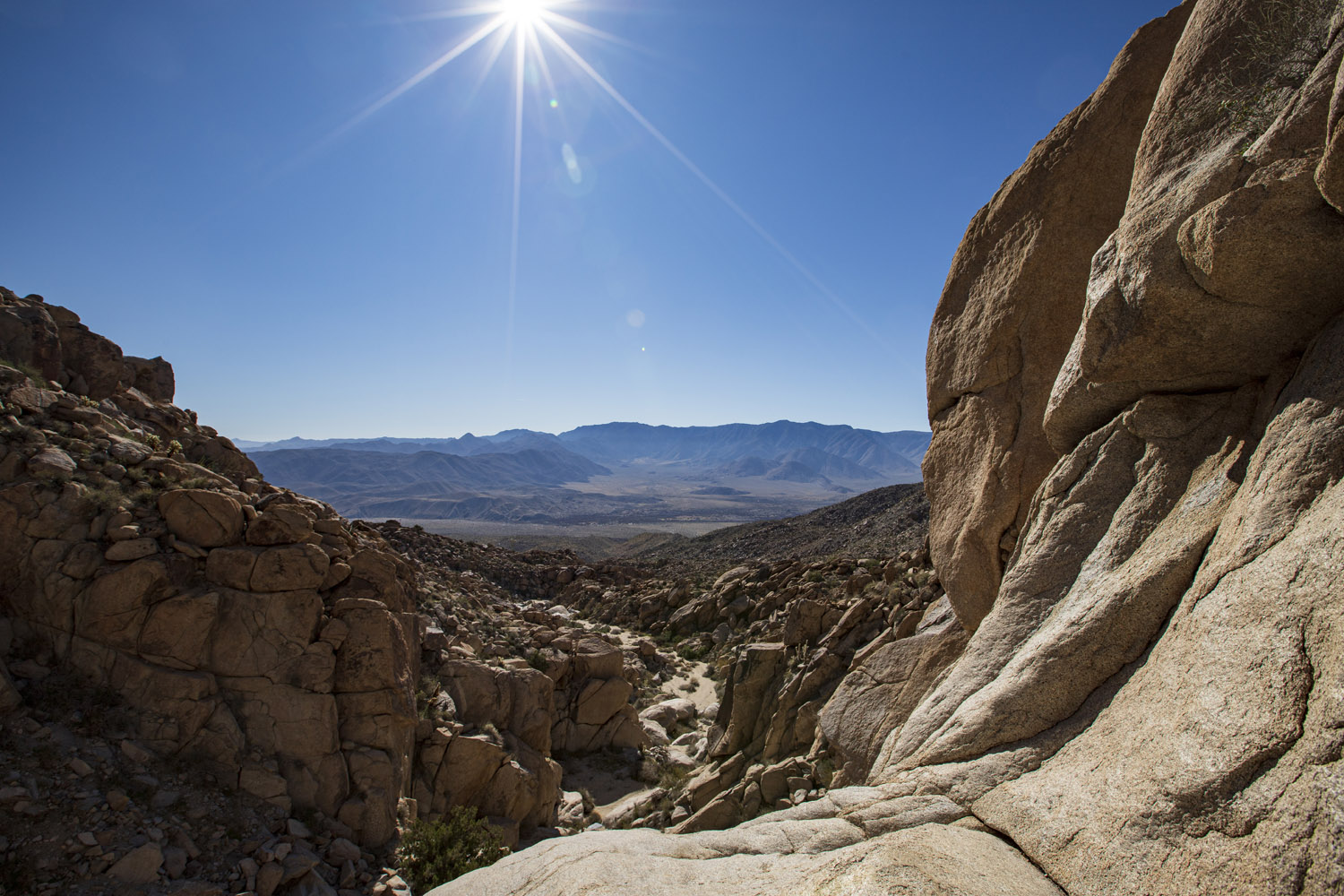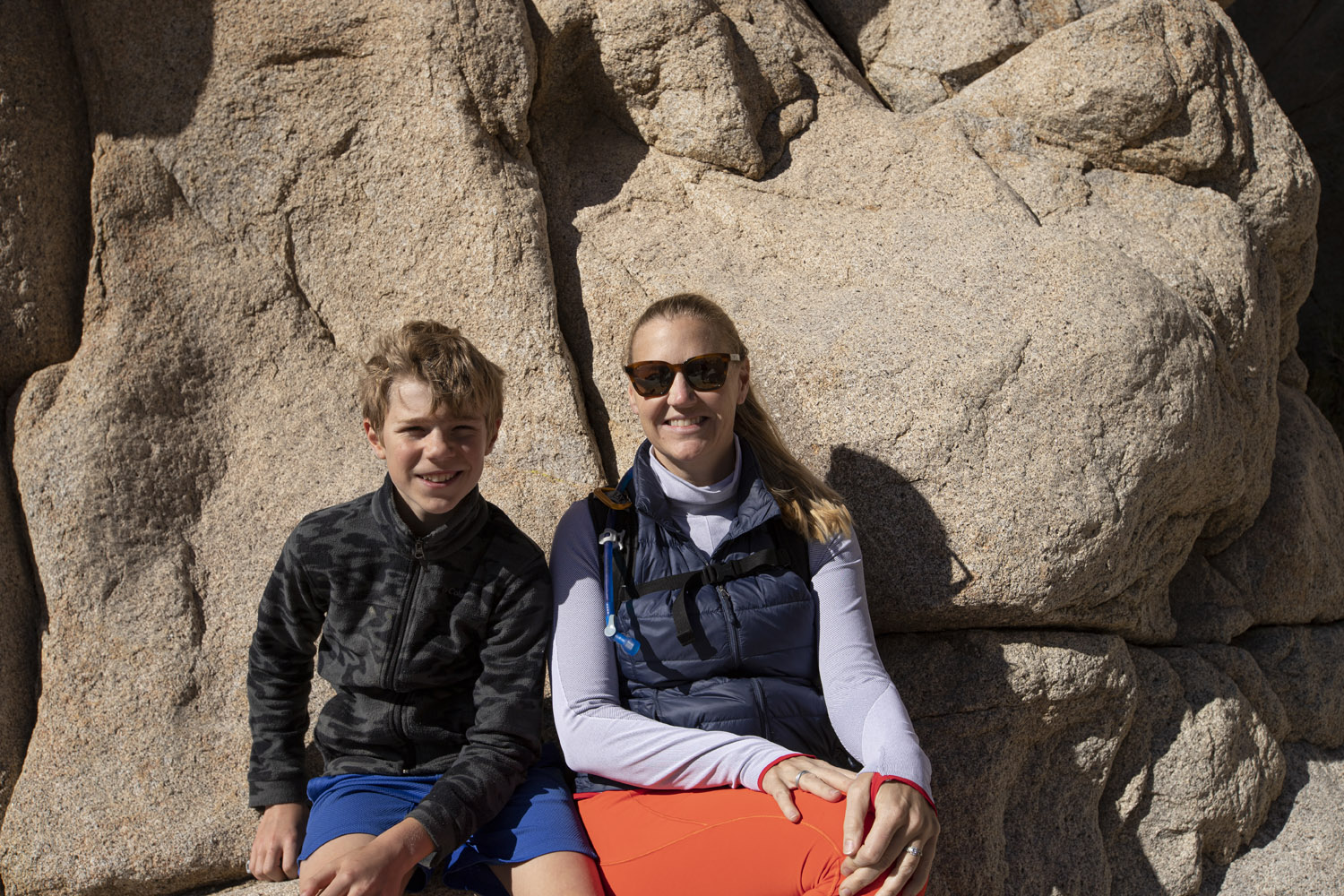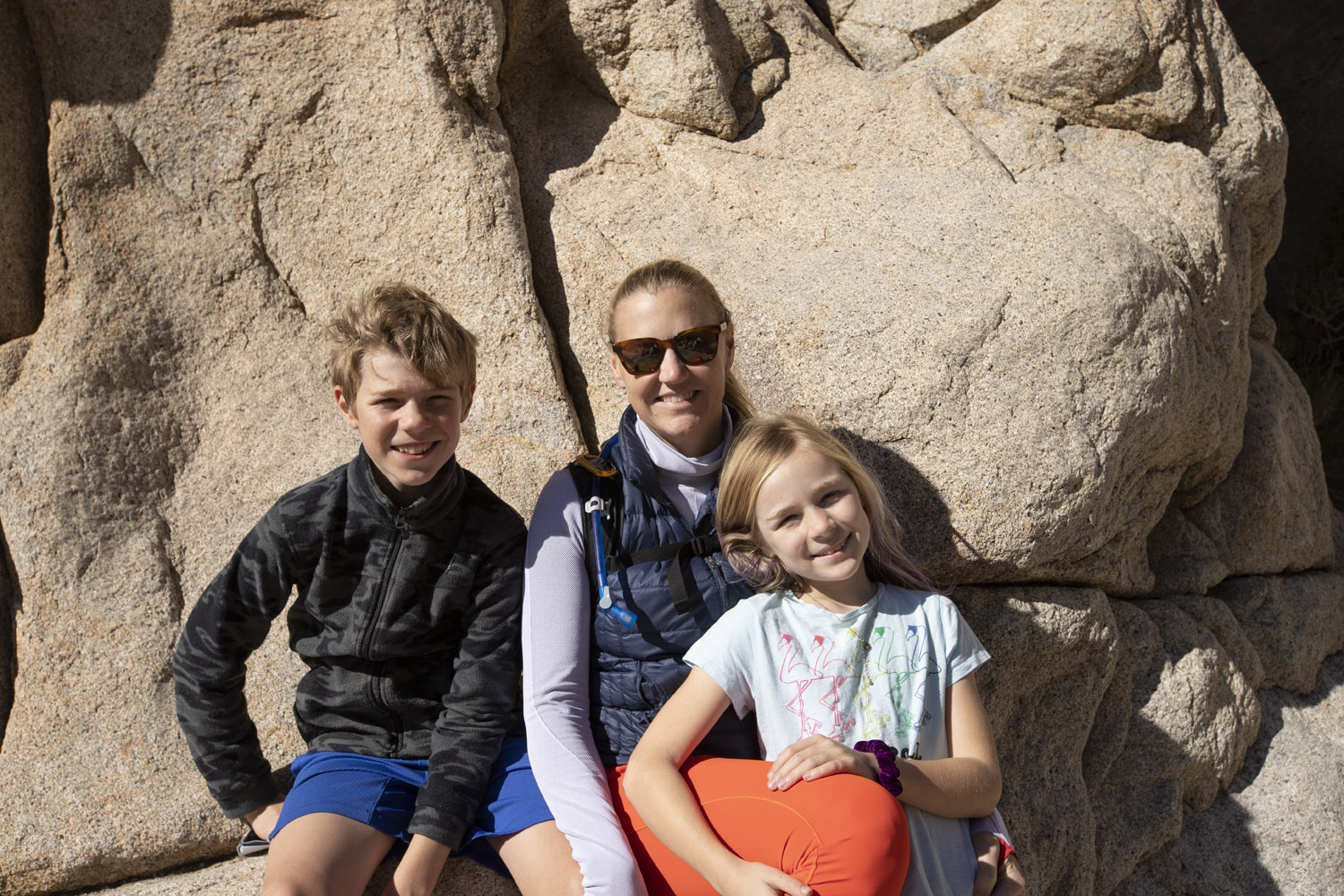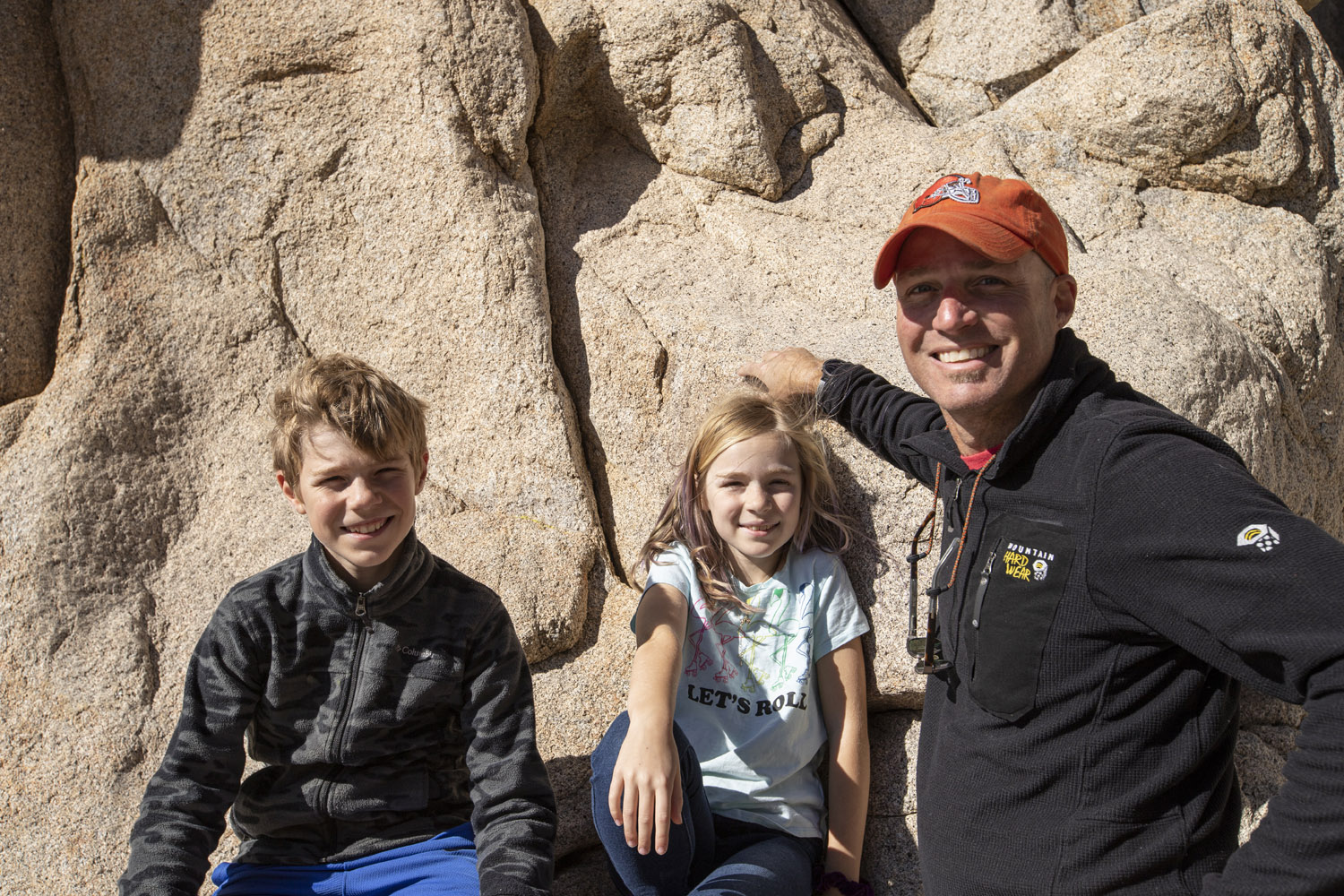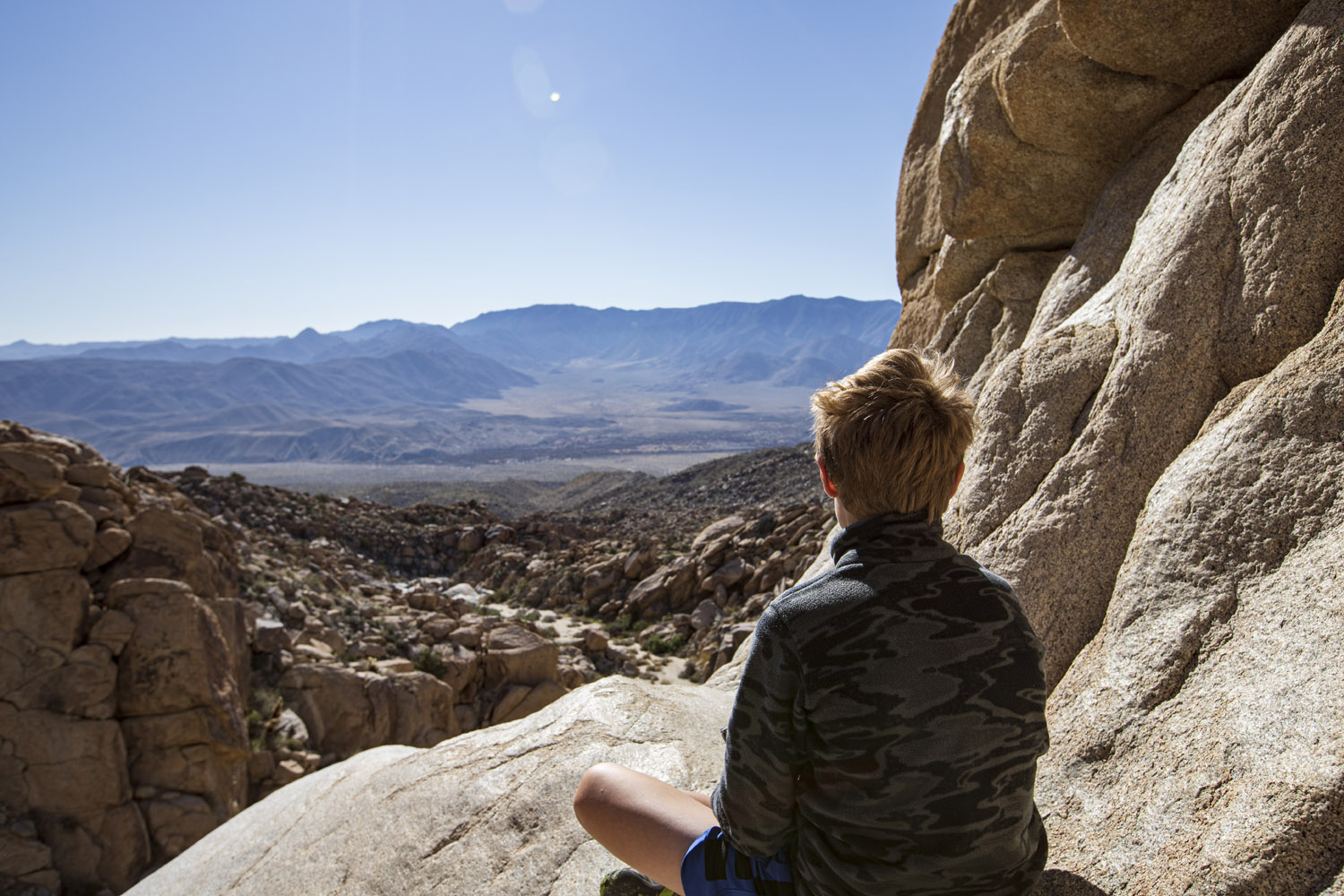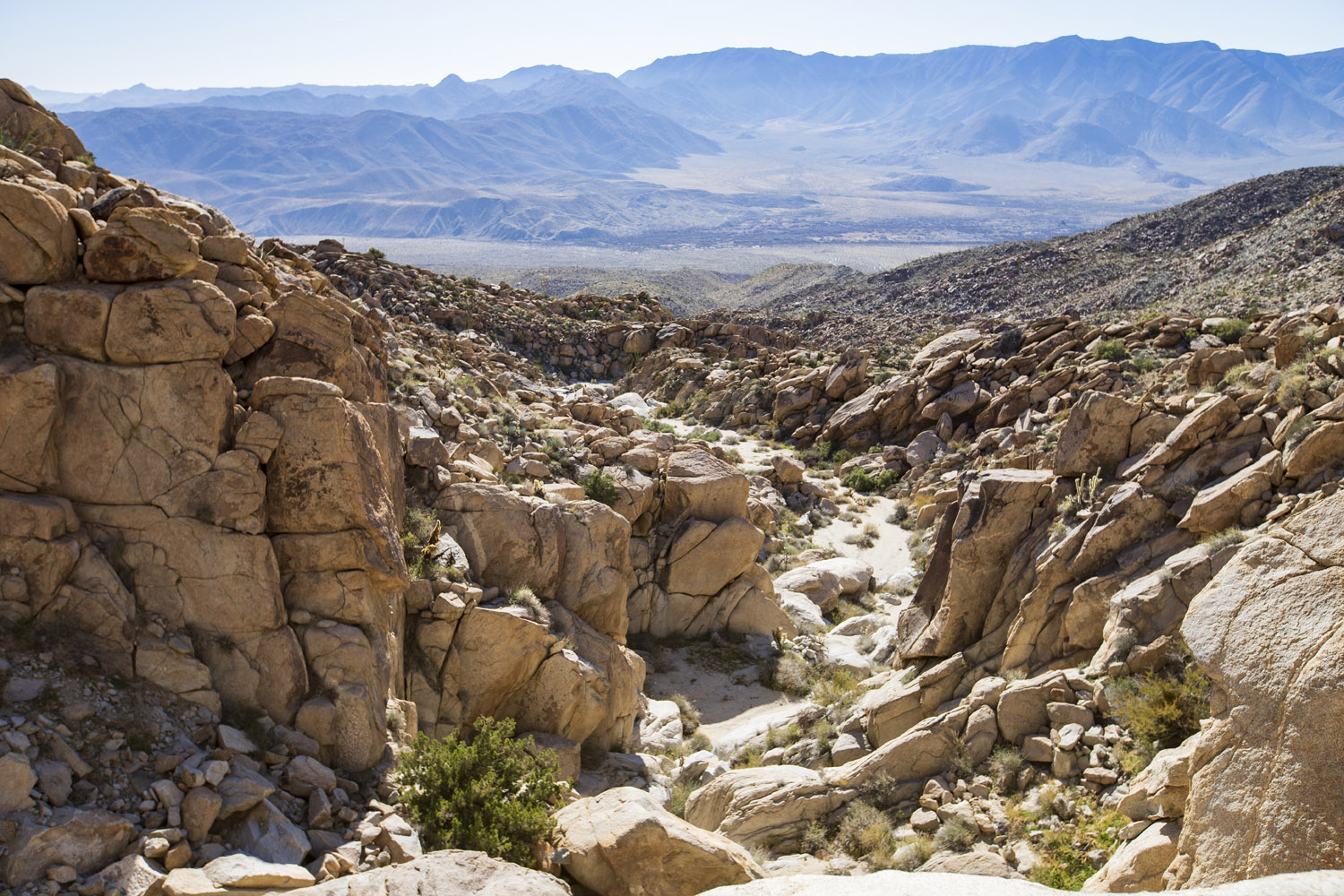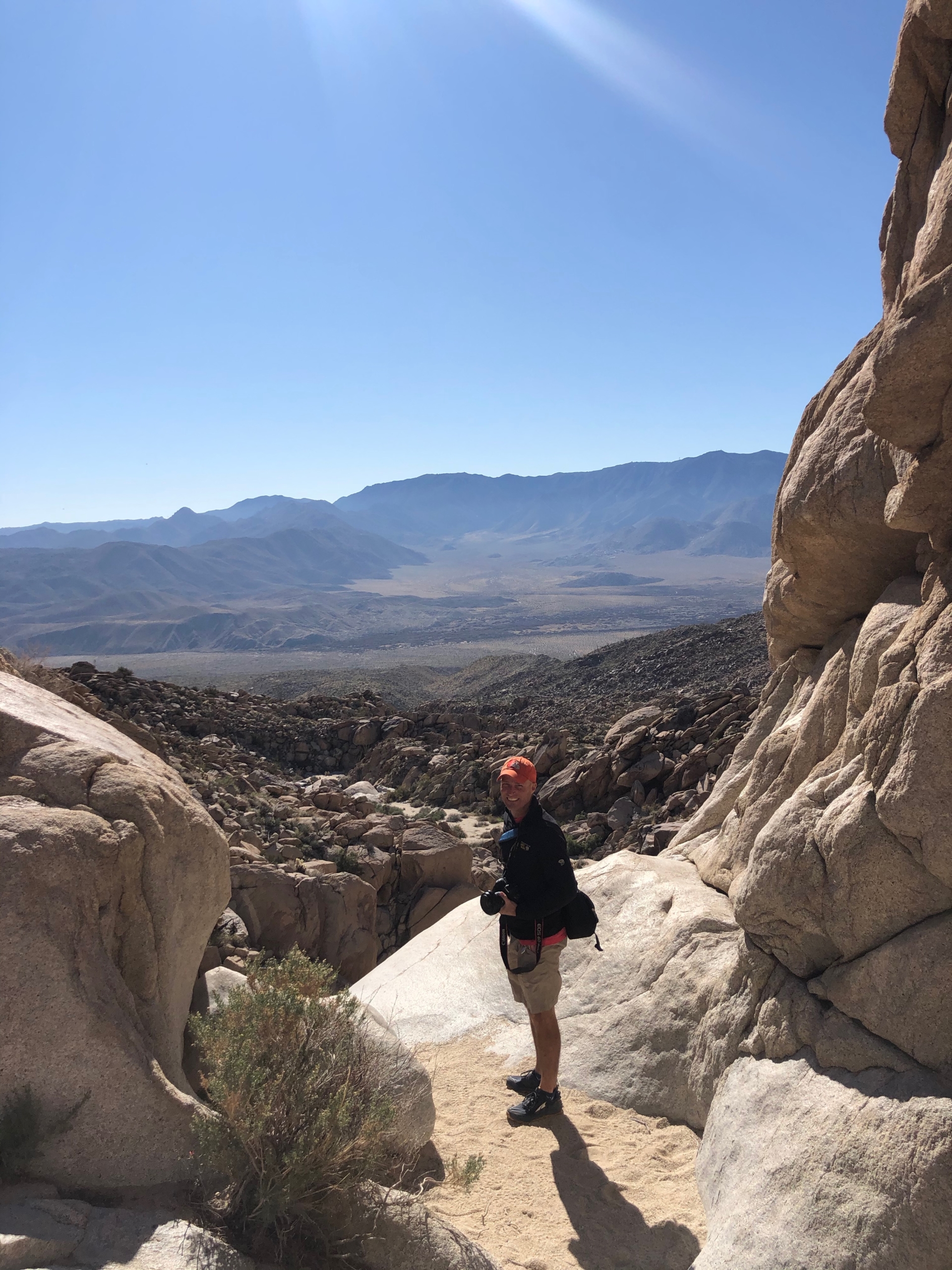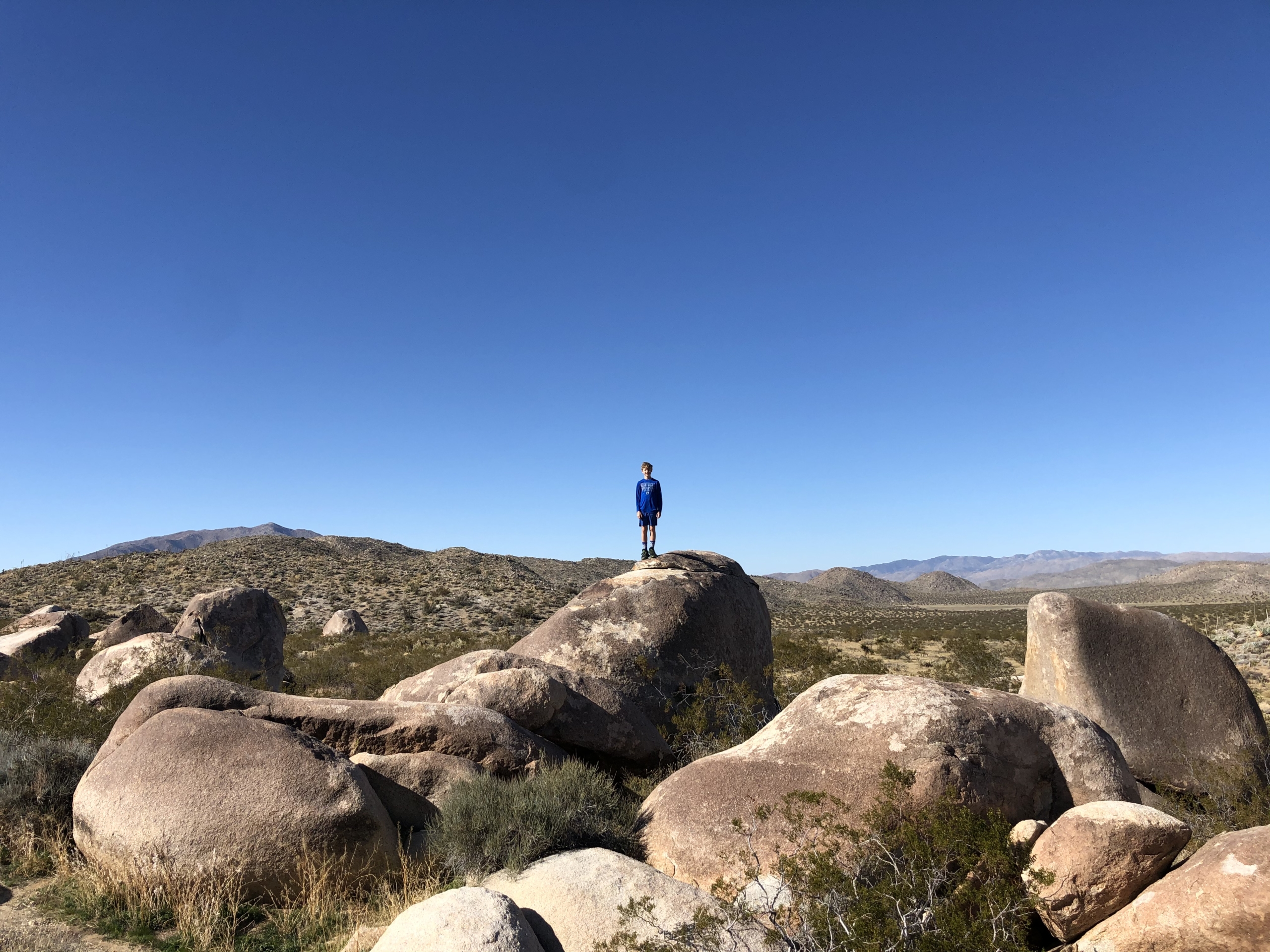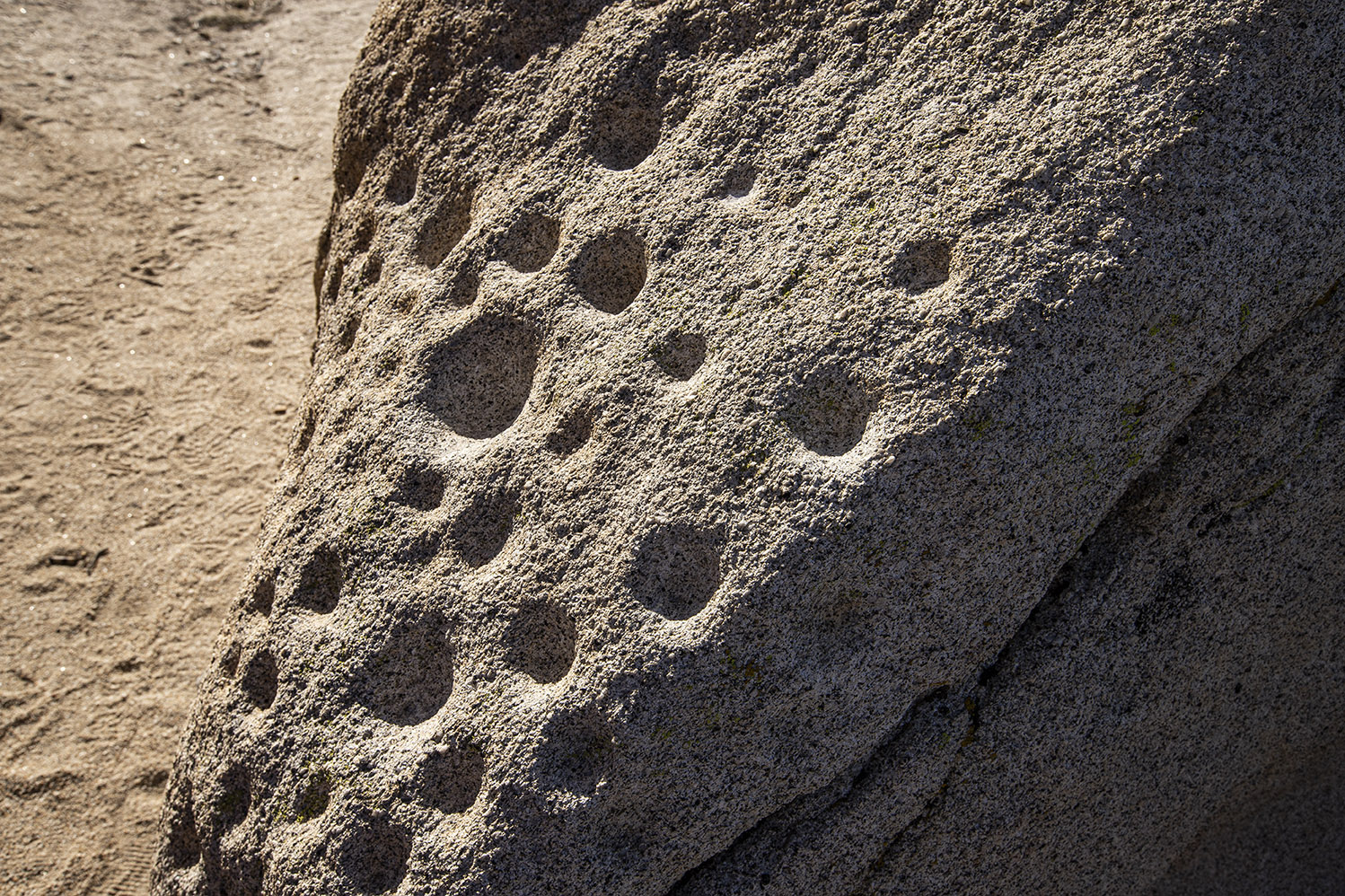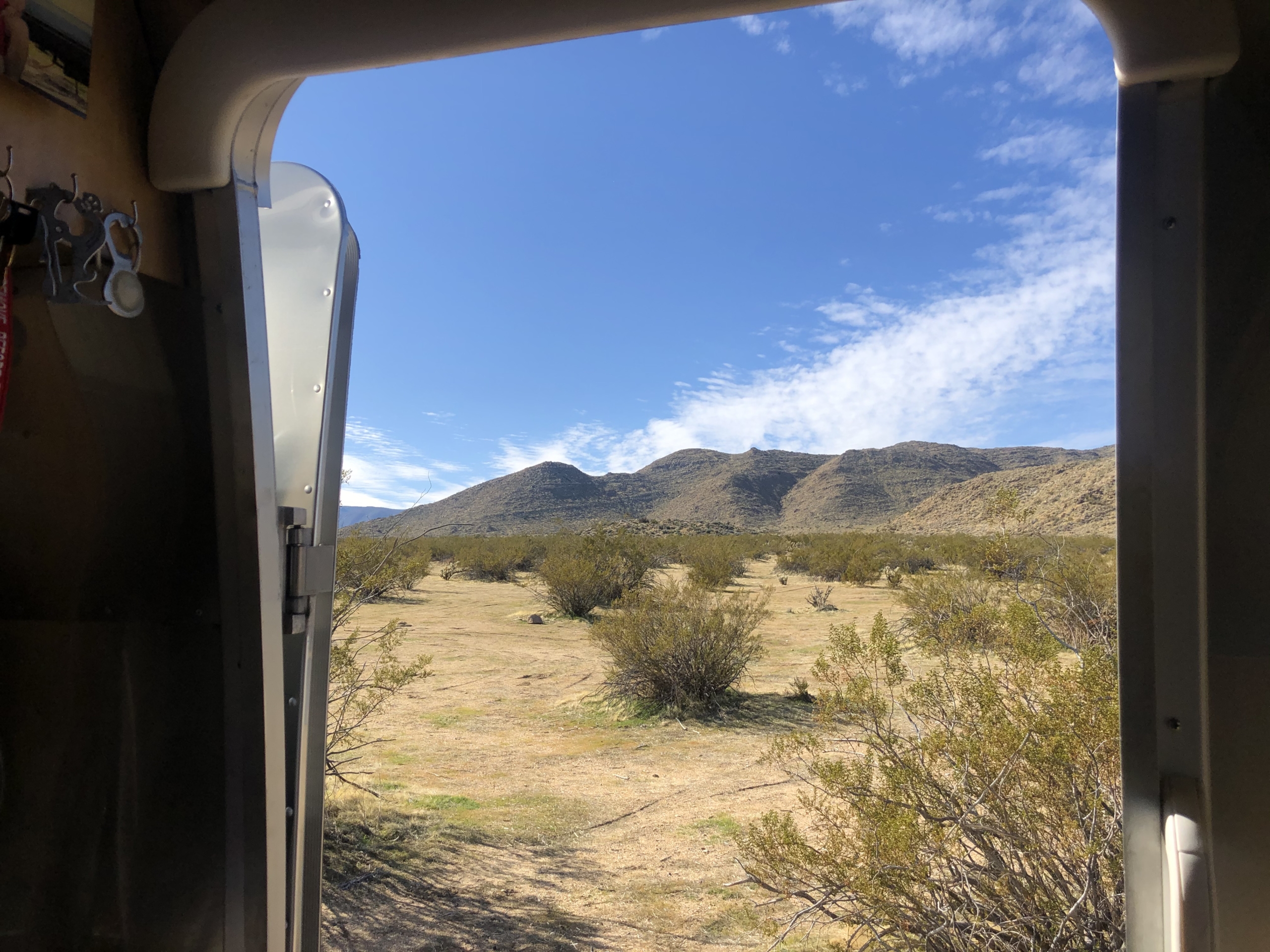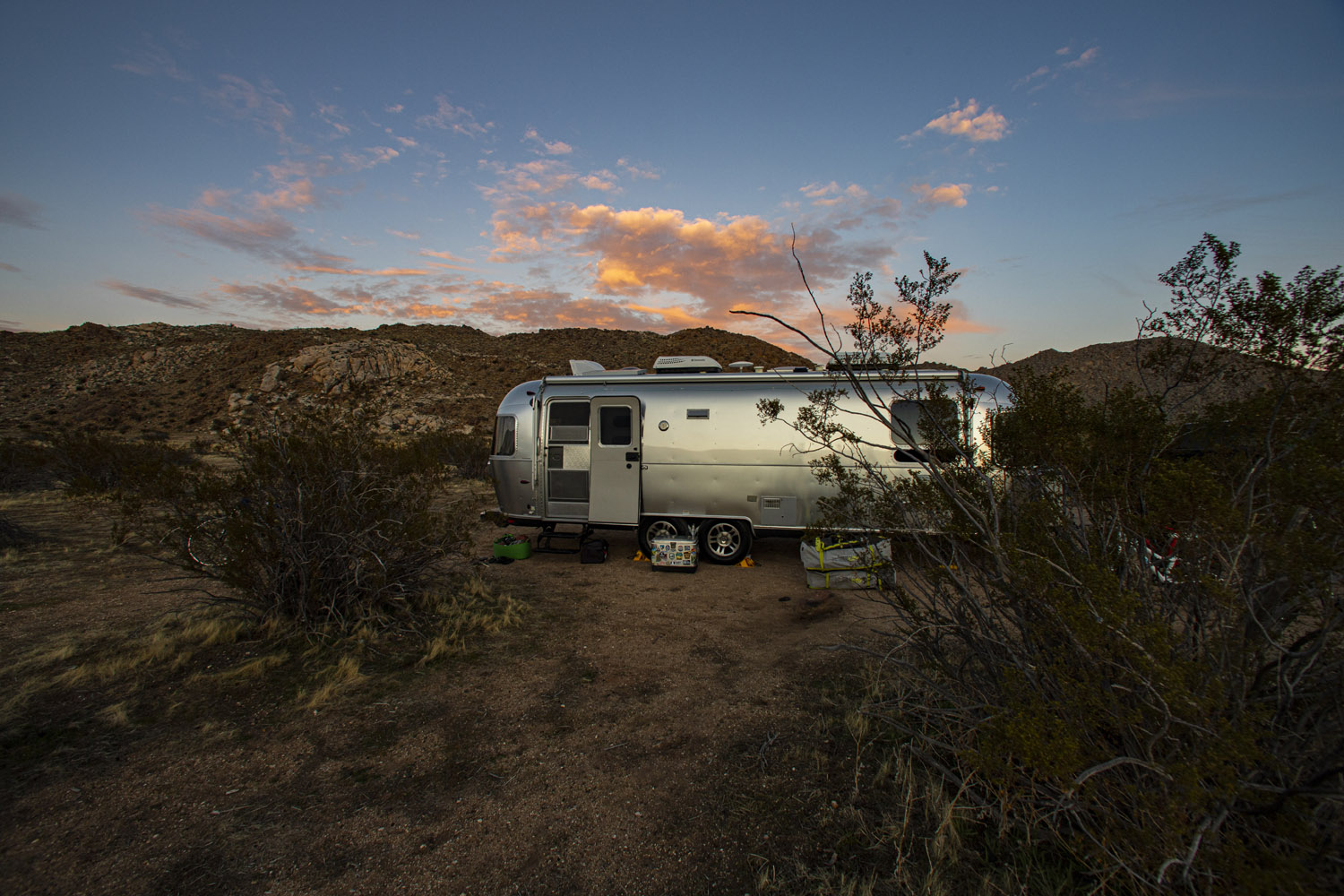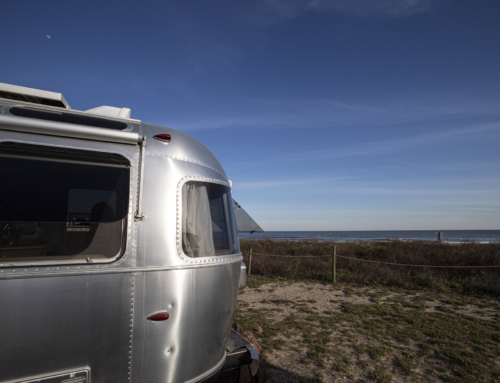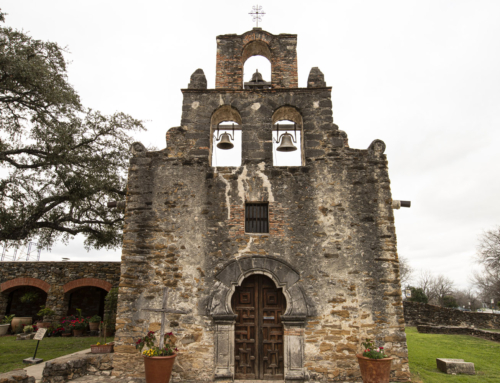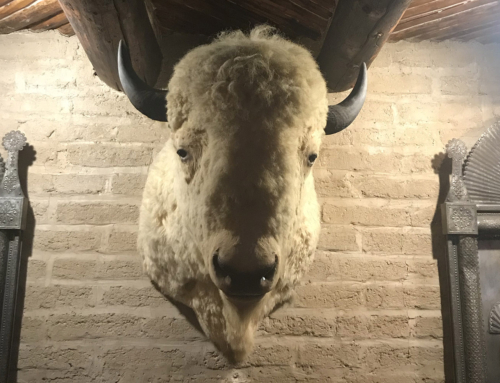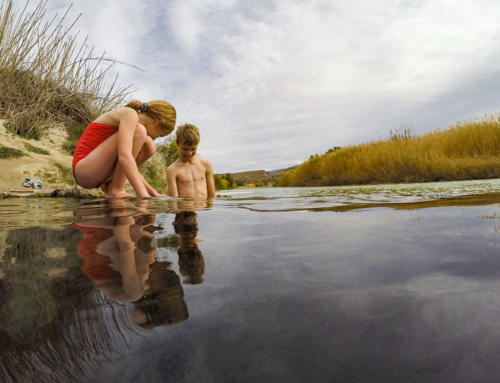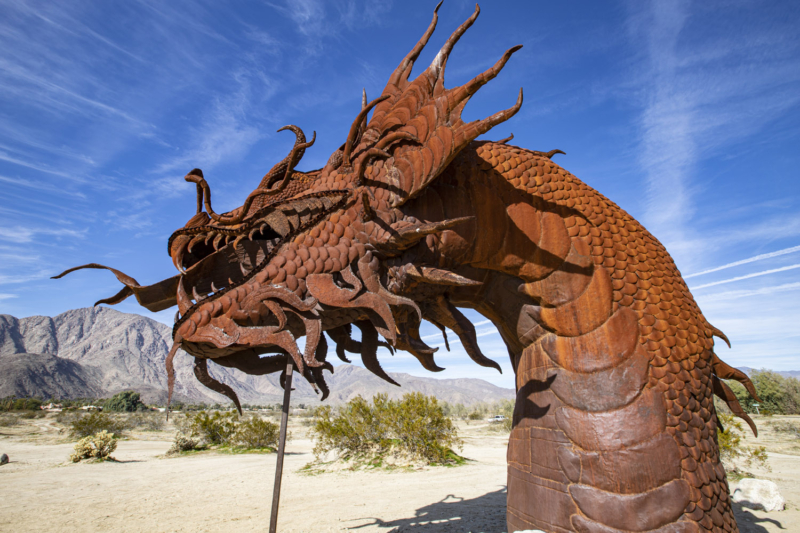
Life is Rich in the Desert
From San Diego, we started into what I’d consider the “southwest” leg of the trip. We’ll be spending about 8 weeks traveling through the very southern part of Arizona, New Mexico and Texas. Personally I have been really looking forward to getting to know the desert…probably because this is surely the ecosystem most different from home. I’ve been to Phoenix a few times in the past, but haven’t really spent a good amount of time exploring. (We did go to Palm Springs and Joshua Tree before Christmas…and they were awesome…but this is the start of a sustained stay.)
When we left San Diego we headed to Anza-Borrego Desert State Park, which is actually California’s largest state park. It was a great campground…our spot was full hookups, the town was just about 10 minutes away which was convenient, and it was still a dark sky park, even with the town so close. It’s rare for all those features to come together.
Our first day we hiked into the Palm Canyon, right out the back of the campground. We had heard that maybe we would see some big horn sheep in the canyon, but had low hopes. We’ve been to several parks that supposedly have herds of big horn sheep, but we haven’t seen single one. So, we took off with our eyes open, but not expecting much. And not even a quarter mile in…there they were! A group of five or so rams and ewes scampering over rocks not even 20 yards from us. And then, another 150 yards down the trail, another big guy perched on a rock chewing some grasses.
We kept climbing back into the canyon, eventually crossing over a creek that was our first sign of the palm oasis we were hiking back to. Once we made it to the grove, we set up and had lunch under the palms at the oasis. I have never been to a real, natural oasis before and thought it was really cool…now I know what the “inspiration source” is for all those fancy hotels that have oasis themes around the pool. A stand of palm trees in the middle of this brown, dry, rocky canyon that offered cool shade for a picnic spot.
We headed back the same way we’d come in, but with a nice downhill slope this time. As we got close to the end, we passed several hikers who told us that a group of big horn sheep were head-butting in the parking lot! Well, we didn’t get to the parking lot in time, but instead, about 8 or more rams came peacefully walking past us on their way back into the canyon. Apparently they had worked it all out, and were back to being bros.
After finding a spot in town to watch LSU win the football championship, we woke up the next day to go explore some of the desert art. As we had driven into town a few days earlier, we passed a field full of giant metal sculptures. We later found out that there are over 100 of these sculptures on land around town called Galleta Meadows. The heir to the Avery label fortune bought the land and commissioned the art from Ricardo Breceda. There are modern-day animals like elephants and scorpions, dinosaurs, dragons and some people – like a priest with his dog, and couple of Jeepers. Best of all, all of this art is out in open land that welcomes you to walk right up to it and touch it. What a wonderful gift of public art!
From there, we headed down the road to find one of the slot canyons, stopping on the way at an orange grove with an honor-system pay box to get a bag of tangelos for $3. Delicious. The trail started with flat dry hike about a mile back into a brown canyon with very little greenery, until the walls narrowed and became a wavy slot, at times only wide enough for one person to squeeze through. We all loved it. The rock here was sandstone, so a bit grainy feeling, unlike the smooth marble canyons we’d seen at Death Valley. But much taller, tighter and wavier than the ones we’d seen before.
After our hike, we stopped by the badlands on the way back to the campground. While there we saw a crew doing a photo shoot shoot that was clearly a marketing team…Dennis had some flashbacks and I had to stop him from stepping in and directing. 😉
Later that night, Dennis headed back to meet with the dragon again and take his portrait with the night sky.
After our nights in the state campground with all the luxurious services (water! electric! sewer!), we headed out for our other favorite type of campground…dispersed camping. While we were technically at a primitive campground, it was basically “pick out your spot wherever you’d like” in a huge valley between two buttes. We chose a spot in the middle of the valley to try to get maximum solar power, and stretched out and enjoyed all the space. In the two days and nights we spent at the spot, we did see some other campers across the valley, but never had anyone close enough so that if we yelled to them they could have understood what we were saying. We all seem to thrive in this openness.
In the last hours of daylight we took off to explore the area around us and discovered a cactus grove that looked exactly like what landscape architects all over the southwest must be trying to recreate…scattered boulders surrounded by agave, yucca, and all kinds of cacti. We looked around until one of us (I won’t point fingers, but it was the youngest one) got a cactus spike in her foot. That pretty much ended things.
The next day we set out to explore the two features popular to the area…an ancient Indian petroglyph and an Indian “kitchen” in an area that had been a seasonal home for several semi-nomadic tribes. The hike back to the petroglyph was beautiful…crunchy sand/gravel underfoot with the bright sun and a landscape covered in all those cacti again. We got to the petroglyph…and yes it was neat to think that someone had painted it thousands of years ago…but it was just one small set. I think we have been spoiled by seeing so many in pictures that we all expected a lot more paintings to be there. That being said, they were amazing to think about and wonder what they were trying to document in the figures. We continued on about a mile past the petroglyphs and came to a gap in the high rock walls that exposed an amazing overlook to the valley below nestled below. We agreed that the landscape, weather, petroglyph and overlook all earned this hike a spot on our top 10 list so far.
After we finished the petroglyph trail we passed the trail for the ancient “kitchens” and decided to check it out as well. It was a self guided trail that taught us all about how the Indian families lived in the area, including plants that were important to them and how they roasted the agave. After a bit we got to an area with smooth “bowls” that had been carved into the rocks for grinding seeds and grains with sticks and rocks. There were over a dozen different holes where food, medicines, paints and more had been prepared.
We returned to the campground and spent time reading in the open air. Maya and Dennis also took the opportunity to shoot the bb gun…her aim is really getting good! She’s definitely the sharpest shot of all of us. Later we lit a campfire to counteract the cooling air while I prepared dinner. Basically, we just chilled in the wide open desert. And even though they coyotes were yipping so loudly that night it sounded like they must have been circling our camper, we all agree that this is absolutely our favorite style of campsite.
